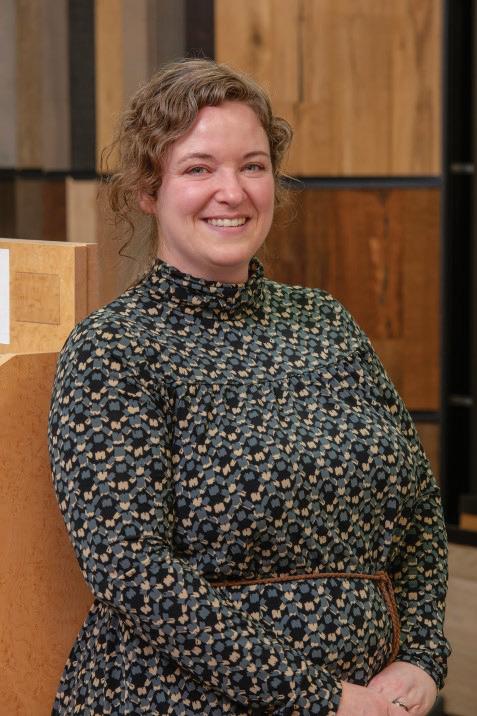INVESTMENT PROFESSIONALS



























Traverse City Office 236 1/2 E. Front Street, #26 Traverse City, MI 49684 231-943-6988
Main Office 5931 Oakland Drive Portage, MI 49024 269-385-5888 or 888-777-0216
• We uphold a Fiduciary Standard and work with clients on a fee-only basis.
• We do not receive commissions, kick-backs, or soft dollars from product sales, eliminating inherent conflicts of interest.
• Our team of professionals holds designations and degrees such as CFP®, CFA, CPA, MBA, JD, and PhD.
• Charles received his MBA from the Kellogg School of Management - Northwestern University, his MA in Economics from WMU, and Executive Education from Harvard Business School and Columbia University. Charles Zhang, CFP®, MBA, MSFS, ChFC
• Ranked #1 on Barron’s list of America’s TOP Independent Advisors for 2024. Charles has achieved the #1 ranking three times within the past four years.*
• Ranked #4 in the nation on Forbes’ list of TOP Wealth Advisors and is the highest-ranking Fee-Only Advisor on the list.*
of LPL Financial and Charles Schwab.


The Northern Lakes Economic Alliance (NLEA) recently unveiled its three-year strategic plan, designed to drive economic resiliency and prosperity across Antrim, Charlevoix, Cheboygan and Emmet counties. Guided by insights from more than 250 community and business leaders, the plan outlines a vision for the region’s economic future. “We envision a thriving regional economy with a robust business environment, diverse family-sustaining career opportunities, and an exceptional quality of life for all residents,” NLEA President and CEO Payton Heins said. The plan calls attention to key obstacles – such as a shrinking working-age population and limited infrastructure and development-ready sites – as well as emphasizes opportunities such as natural assets and overlooked industries that are innovating and provide higher wage career opportunities.
The Rivard Teahen Group in Traverse City is now The Rivard Teahen Wheatley Group after recently expanding its group with new team member Jon Wheatley. Wheatley joins advisors Kurt Rivard and Rebecca Teahen in providing financial planning services as part of the Baird Private Wealth Management office in Traverse City.
Bay Area Transportation Authority (BATA) is partnering with TVC-Cherry Capital Airport to launch a pilot service dedicated to helping air travelers reach their early morning flights. The new trial service will operate Monday - Friday from 4 a.m. to 7 a.m. Riders need to request a ride at least 48 hours in advance but can schedule up to two weeks in advance of their travel date. The cost to ride is $12 per person and luggage can be stored in the seat with the passengers. Initially, the new service area will be limited to Traverse City but may expand based on ridership and demand. Rides can be scheduled by calling BATA Scheduling at 231.941.2324 or through the BATA Link mobile app. To see the trial service area and learn more, visit www.bata. net/airport.
Neuco Furniture & Upholstery recently announced a move. The company has relocated to 1237 Hastings Street in Traverse City and is in the process of constructing a showroom. Learn more at callneuco.com.

HomeTown Pharmacy, a Michigan-based, family-owned company, recently took ownership of five retail pharmacies in Grand Traverse and Leelanau counties from Munson Healthcare. They include Munson Community Health Center Pharmacy, Sixth Street Drugs, Munson Medical Center Discharge Pharmacy, Munson Suttons Bay Pharmacy, and Munson Empire Pharmacy. “We are retaining the staff and staying in the same locations so there will be little change for customers,” said Dianne Malburg, president of HomeTown Pharmacy. HomeTown is already a provider of longterm care pharmacy services to several Munson-owned and operated affiliates which expanded to two additional nursing facilities this past year.
Locals Lake Leelanau is taking over the former home of Northern Latitudes Distillery (which is relocating) in Lake Leelanau and converting it into a restaurant, retail shop, catering enterprise, and community center. Local food and beverage veteran Tony West is behind the project at 112 East Philip St., tentatively slated to open its doors May 1. West said the restaurant will serve “upscale pub-style food” with a local focus, complementing existing Lake Leelanau offerings like Dick’s Pour House, Nittolo’s, and Fiddleheads. West most recently served as director of food and beverage at the Leland Lodge. He also plans to offer a “Locals to the lake to-go menu,” where boaters can pull up to the docks at the Narrows and get food delivered directly to their boats. The business will also include a retail component, which will carry merch and goods from area farms, makers, and artisans. The Leland Lodge has also announced a “new culinary chapter.” John Sisson is now helming the Leland Lodge’s food and beverage program. Sisson is best known in Leelanau as the former owner
















of the Leelanau Country Inn (now the Little Traverse Inn), which he operated with his wife Linda for 21 years. Linda has also come aboard at the Leland Lodge, contributing “homemade desserts and other treats” to the menu. Christian Doran is continuing on as head chef.
Davenport University is now a partner in Direct Connect, a program of Northwestern Michigan College in Traverse City that makes transferring to earn a bachelor’s degree as streamlined as possible. With Direct Connect, NMC students are guaranteed admission to Davenport if they maintain a 2.0 GPA. Credits earned toward their NMC associate degree count as freshman and sophomore year credits at Davenport. They can then transfer into one of six Davenport business and information technology programs. Last fall, NMC debuted Direct Connect with Grand Valley State University’s Allied Health program.

Several wineries from the Leelanau Peninsula Wine Trail won honors at the recent 2025 San Francisco Chronicle Wine Competition, the largest wine competition for North American wines. Named Best of Class were Aurora Cellars’ 2022 Grüner Veltliner and Verterra Winery’s 2023 Pinot Grigio. Double Gold medal winners include Aurora Cellars’ 2023 Sauvignon Blanc; Verterra Winery’s 2021 Verterra Sparkler, 2023 Pinot Blanc, and 2023 Dry Riesling; and Shady Lane’s 2023 Grüner Veltliner. Other winning wineries were French Valley, Good Harbor Vineyards, Bel Lago, Blustone Vineyards, Boathouse Vineyards, and Leelanau Cellars
Chris and Jim MacInnes, owners of Crystal Mountain in Thompsonville with the Petritz family, have been named recipients of the Michigan Legacy Art Park’s Legacy Award. The award was established in 2009 to unite those involved in Michigan arts and culture and to demonstrate and recognize the power of collaboration and peer influence. “Michigan Legacy Art Park would not exist without the
trust, support and partnership of Crystal Mountain, led by Chris and Jim MacInnes,” said Joan Verla, board president. “As we celebrate our 30th anniversary year, we are delighted to honor Chris and Jim for believing in Michigan Legacy Art Park from the very start.” Chris MacInnes was born in northern Michigan and along with her husband Jim joined the family business at Crystal Mountain in 1985. The MacInnes’ will be celebrated at the annual Legacy Gala in August.

Nominations are being accepted until March 15 for the annual Hospitality High Five Awards by Traverse City Tourism Now in its second year, the awards honor those who excel in the northwest Michigan hospitality industry. Award winners will be chosen by an independent committee of northern Michigan hospitality experts and announced at the Traverse City Tourism annual meeting in May. “There are so many hospitality superstars in our area,” said Traverse City Tourism President Trevor Tkach. “These are the people that make our area one of the premier travel destinations in the country. It’s appropriate to put the spotlight on their contributions.” Learn more and submit nominations at traversecity.com/hospitality-awards.
Four community leaders recently joined the board of directors for Habitat for Humanity Grand Traverse Region. Paul Busekist has been the senior pastor at Bethlehem Lutheran Church City since 2011. Prior to parish ministry, Pastor Paul served as a hospital chaplain in the Chicago area. Brandie Ekren is the executive director of Traverse City Light & Power. Ekren previously served for six years on the board of directors for High fields, a nonprofit focused on stabilizing and empowering families. Al Everett of Thrive TC and Epique Realty brings a strong background in real estate development and construction technology. Everett has experience working with two architectural firms, mentoring new businesses through SCORE, and being a founding member of initiatives that promote innovative construction methods. Desiree Worthington of Worthington Fundraising Solutions has spent her 33-year career working with charitably-minded families and organizations. Worthington has led several campaigns for start-ups and large charities and has been a Certified Fundraising Executive since 2010.


412 WEBSTER STREET IN DOWNTOWN TC
Originally built in 1913 as a school, the Boardman Building has long stood as a beloved centerpiece of the Boardman Neighborhood. Now, this iconic structure is undergoing a stunning transformation under the visionary guidance of renowned local architect Ken Richmond and master builder Eric Gerstner.

Expertly Designed. Fully Customizable.
















It’s been six long months since the Michigan Supreme Court made headlines by ruling that the Michigan legislature had violated the state constitution in its “adopt and amend” approach to two ballot measures related to minimum wage and paid leave. While several states across the country have instituted paid sick leave laws, the Michigan ballot measure’s lack of clarity created one of the most burdensome sick time acts in the country.
As readers may recall, I drew attention to the Earned Sick Time Act (ESTA) and tipped wage ruling in my December article. I would not usually address the same issue two quarters in a row, but the implications of these policy changes are immense and incredibly far-reaching. The court’s decision brought uncertainty and anxiety to businesses as they worked to understand the implications and application of the new rules – and concerns grew as state lawmakers spent the last few months debating last-minute changes to the regulations before they came into effect on February 21, 2025.
The irony is that many of our region’s employers, to compete for talent, already provide the required 72 hours or more of paid leave. Yet the rules under ESTA are so ambiguous regarding usage, rollover, documentation and record-keeping, reinstatement, and defining who qualifies as an employee that it creates layers of complexity that small businesses will struggle to navigate, increasing administrative burdens and potential legal risks.
The Northern Michigan Chamber Alliance spent months advocating for legis-
EDITORIAL & BUSINESS OFFICE
P.O. Box 4020 Traverse City, MI 49685 231-947-8787
ON THE WEB
tcbusinessnews.com
PUBLISHER
Luke W. Haase
lhaase@tcbusinessnews.com
CONTRIBUTING EDITOR
Gayle Neu
gneu@tcbusinessnews.com
HEAD WRITER
Craig Manning
STAFF WRITER
Art Bukowski
lative action and reasonable amendments to be made to ESTA and minimum wage requirements before the February deadline. At the same time, we prepared our regional business community for compliance with the full implementation of the requirements as they were written. It has been a balancing act: fight for the needed changes while also preparing for the worst! Unfortunately, no action was taken by the state legislature in the lameduck session at the end of 2024.
New State House and Senate bills were
make this stuff up.
To support employers in navigating these changes, the Alliance hosted a webinar on January 22 with more than 350 participants, featuring Rehmann’s Elizabeth Williams, principal of HR Solutions. The webinar provided employers of all sizes with advice on implementing and complying with the ESTA requirements as currently written – a recording is available on Traverse Connect’s website.
Activity in the state legislature finally
The Northern Michigan Chamber Alliance spent months advocating for legislative action and reasonable amendments to be made to ESTA and minimum wage requirements before the February deadline.
introduced in early January. Our local Rep. John Roth (District 104), introduced HB 4001 to modify the minimum hourly wage and Rep. Jay DeBoyer (District 63) introduced HB 4002 to modify ESTA. Both bills passed the House on January 23 with bipartisan support, after which they were sent to the Senate Committee on Regulatory Affairs. However, the Senate committee voted against taking up the House bills and instead held hearings on the Senate’s different version of legislation, beginning on February 6. No, this course of events does not make much sense and no, you can’t
CREATIVE DIRECTOR
Kyra Cross Poehlman
CONTRIBUTING WRITERS
Ross Boissoneau
Kierstin Gunsberg
Rick Haglund
COPY EDITOR Becky Kalajian
WEB PRODUCTION: Byte Productions
MAILING/FULFILLMENT Village Press
DISTRIBUTION
Gerald Morris
SERVING: Grand Traverse, Kalkaska, Leelanau and Benzie counties
ramped up as we approached the February 21 deadline with a Senate bill to replace the house version of the tipped/ minimum wage law and a modified version of HB 4002. Haley Bennett, the Director of Government Relations for the Northern Michigan Chamber Alliance, provided testimony in the Senate hearing about the danger of not acting for our small businesses. Negotiations continued through mid-February and a possible deal began to take shape with a “tie-bar” provision that ensured action on the tipped minimum wage issue could only proceed if there was also action on
AD SALES
Lisa Gillespie lisa@northernexpress.com
Kim Murray kmurray@tcbusinessnews.com
Kaitlyn Nance knance@northernexpress.com
Todd Norris tnorris@tcbusinessnews.com
Abby Walton Porter aporter@northernexpress.com
Michele Young myoung@tcbusinessnews.com
Earned Sick Time and vice versa.
As I write this (on the morning of Friday, February 21), we have a last-minute solution! The legislature just completed a marathon session with a final vote in the house at 11:15 p.m. last night, and the approved bills were presented to the governor at 1:30 a.m. this morning. The updated legislation is not perfect, but it does address a number of the issues we have been voicing for small businesses in northern Michigan: greatly reducing the administrative burden and ensuring there is not a one-size-fits-all approach to business, provisions for small businesses with 10 or fewer employees, exemptions for nonprofit organizations, and differentiated provisions for seasonal and parttime employees. There are many more details to digest from last night’s session, and there will be a learning curve for employers of all sizes as the new rules come into effect.
The legislature’s delayed actions only heightened the uncertainty building since July. Business advocates must continue to demand a balanced and practical approach to achieving fair and sustainable outcomes that support Michigan’s employers and their employees. Traverse Connect and our partners in the Northern Michigan Chamber Alliance will continue to be advocates and provide updated resources and information for employers as details of the new laws are published.
Warren Call is CEO and president of Traverse Connect.
The Traverse City Business News Published monthly by Eyes Only Media, LLC P.O. Box 4020 Traverse City, MI 49685 231-947-8787
Periodical postage qualification pending at Traverse City, MI.
POSTMASTER: Send address changes to The Traverse City Business News, PO Box 1810, Traverse City, MI 49685-1810.
The Traverse City Business News is not responsible for unsolicited contributions.
Content ©2025 Eyes Only Media, LLC. All rights reserved.
EYES ONLY MEDIA, LLC

For 40 years, Mercer Advisors has been helping families amplify and simplify their financial lives. That dedication has earned us the #1 RIA Firm in the Nation ranking from Barron’s in 2024.* More than just an accolade, it’s a testament to the trust our clients place in us.

By Art Bukowski
Sid Van Slyke is senior vice president and market leader for West Shore Bank in Traverse City. He invited us to his office in the bank’s snazzy Eighth Street digs for a look at his desk, then to a blood drive in the bank’s top floor event space, which has been used for dozens of community events over the past year. Thanks, Sid! If you have an idea for a From The Desk Of feature, please email Art Bukowski at abukowski@tcbusinessnews.com.


1. We’re rabid Detroit Lions fans at our house. The four of us as a family go to the Thanksgiving game every year; it’s become a tradition. My son started tagging along seven years ago, and he saw six losses in a row. So we were really excited this year to get the big win!
2. A few years ago, shortly after COVID, we bought a place up at Boyne Mountain. And it has become our family hangout. We spend a ton of time at Boyne – we ski, we golf, the kids love the waterpark.
3. This rock was painted by Anna Bottura, our Rotary youth exchange student from Italy. During the dark days of COVID, our kids took to painting rocks for something to do while we were locked in the house every day. Anna stayed here for an extended time because things were really bad in her home in northern Italy. So this is a wonderful little memory of her and of that time.
4. Commongrounds and the Alluvion are a big part of the reason we’re here. I knew this whole corridor was taking off, and it’s awesome to have that vibrant building next door with a coffee shop, a restaurant and a music venue.
5. We’ve probably been to 20 opening days for the
6. The picture on the mousepad is me drinking out of a ‘Just Great Movies’ Traverse City Film Festival mug. I did 15 years as a venue manager (City Opera House), and I think of my time with the film fest as how I got to know this town.
7. Here’s the West Shore Bank website. The bank is 126 years old this year, and it has only 10 offices. It is, by definition, a true community bank. To be in the position I’m in, and to build a team exactly the way I wanted, for a bank that so acutely understands the needs of the markets we sit in, has been exactly where I want to be in my career. It’s my dream job.
8. This ‘Kid from Flint’ coffee mug has been with me for about 20 years now. I was born and raised in Flint, and I carry it with me every day.
9. Blood drives are one of the many things we’ve done up here. This space was kind of my brainchild. Last year we hosted 77 events here for nonprofits, and we didn’t charge anybody a penny to use it. We want it to be a space for this community.


Wealth managers see a volatile – but healthy –year for investors Your business is our business.








By Rick Haglund
Investors have been smiling over the past couple of years as stock prices boomed. But will stocks continue their meteoric rise this year?
Standard and Poor’s 500, an index of the 500 largest U.S. publicly traded corporations, jumped 23.8% last year after a 24.2% hike in 2023. It was the first time since 1997 and 1998 that the index has recorded two back-to-back years of returns above 20%, according to FactSet, a Connecticut-based financial data firm.
“(2024) was a really great year,” said Eric Braund, founder of Black Walnut Wealth Management in Traverse City. He and other local wealth management executives mostly say they expect the good times to continue for investors, probably at a slower pace than in the past two years. But they caution there is likely to be more market volatility this year.
“We always love it when we can throw a dart at any stock on the board and make 20%,” said Marc Hudson, president of Hudson Wealth Management in Traverse City. “But there’s a good chance we could see a dip from where (the market) has been.”
A FactSet review of analysts’ forecasts in December predicted the S&P 500 to end this year up 14.8%.
Local investment advisors say uncer-
tainty over where interest rates and inflation are heading, a new administration in Washington that is announcing major policy changes almost daily and geopolitical upheavals make it difficult to predict investment returns this year.
“My proverbial crystal ball is in the shop, so stay tuned,” said Trevis Gillow, senior vice president of investments at Gillow Wealth Management of Raymond James.
Investment advisors say a change in political party control in Washington usually has little impact on long-term investment returns. But President Donald Trump’s election and his vow to radically remake the federal government have some investors on edge.
Holly Gallagher, president of Horizon Financial in Traverse City, says her firm has been fielding concerns from a few clients worried about the election of Trump.
“There’s usually a correction of 20% or more in the market every five years. We’re due for a correction.”
– Holly Gallagher, President, Horizon Financial
Inflation has fallen significantly from 9.2% in June 2022, the highest rate in more than 40 years, to 2.9% last December.
But after cutting interest rates three straight times last year, the Federal Reserve paused rate cuts in January over signs that inflation’s decline has stalled.
So far, the markets haven’t reacted negatively to the Fed’s pause, but that could change if expected rate cuts later this year don’t materialize.
The president, among other things, has threatened widespread tariffs that most economists say would be bad for the economy and taken other actions that have been alternately praised and condemned by experts and voters.
One distraught client said she was moving out of the country and, against Gallagher’s advice, sold off her entire investment portfolio, triggering a large tax bill.
“The emotions out there are real,”



Gallagher said. “You just try to be a good advisor.”
Local advisors say there are also many who support Trump’s policies, which include slashing federal spending, enacting tariffs on countries the president sees as taking advantage of the U.S. and cutting taxes.
“It’s nothing out of the ordinary,” Braund said. “We have clients on both sides of the aisle.”
An analysis Braund wrote last September found the S&P 500 index since 1933 performed about the same throughout Republican and Democratic administrations.
“We focus on the long-term in building an investment portfolio,” Braund said. “Our clients are planning for five, 10, 15, 20 years out. Short-term fluctuations in the market don’t make much of a difference.” Braund and other wealth managers say their clients are mostly well-heeled retirees and those planning for retirement.
A president’s control over the economy is limited by Congress and by monetary policy, which is determined by the Federal Reserve. And the impact of a president’s economic policies might not be felt until after leaving office, Braund says.
Nevertheless, advisors are trying to assess the impact of Trump’s election and other factors on their clients’ investment portfolios.
Gallagher says she thinks the high-flying stock market could stall out and fall by as

much as 20% this year.
“There’s usually a correction of 20% or more in the market every five years,” she said. “We’re due for a correction.”
Autumn Soltysiak, a partner at hemming& Wealth Management in Traverse City said she thinks corporate profits will be more widely spread this year, buoying the markets.
“We’re seeing more of an expansion of earnings across corporations,” she said. “Last year corporate profits were concentrated in the top seven to 10 companies. We think profits will be more broadbased this year.”
others say a strong regulatory framework is crucial to protect investors.
“Regulation is important to keep the bad actors out,” Soltysiak said. “We don’t need another Enron.”
“There will be more chaos, but we’re not expecting dramatic change.”
– Autumn Soltysiak, Partner, hemming& Wealth Management
But she said she’s not expecting inflation and interest rates to fall much, potentially offsetting some of the positive impacts of expected broad-based corporate profits and strong consumer spending.
“There will be more chaos, but we’re not expecting dramatic change,” she said.
The Trump administration also is expected to trim regulations in the financial sector, which could reduce compliance costs for corporations and boost their stock prices, Hudson said. But he and
Enron was a large, Texas-based energy company that collapsed under the weight of a massive accounting fraud in 2001 and filed what was then the largest bankruptcy in U.S. history.
In what is likely to be a chaotic year politically filled with economic uncertainty, financial advisors say it’s important for investors to do one thing: Stick with the plan.
“We test for a (market) correction to make sure our clients are in good shape. But the financial plan is the bible we stick with,” Gallagher said.
Making short-term decisions and trying to time the market usually are bad ideas in building longterm wealth, advisors say. But it is important to periodically “rebalance” portfolios to adjust asset mixes as life circumstances and investment goals change, they say.
“Ultimately, we are seeking a portfolio that fits like Cinderella’s glass slipper,” Gillow said.









and Downs?: Volatility and chaos could rule this year
• The S&P 500 index returned back-to-back gains of at least 20% in 2023 and 2024 for the first time since 1997 and 1998.
• A survey of analysts’ forecasts predict the index will rise 14.8% this year.
• Uncertainty over inflation, interest rates and economic policies in a new administration have clouded local financial advisors’ crystal balls.
• Wealth managers say it will be critical this year to stick to basic financial plans but rebalance asset classes in portfolios when needed.



By Des Worthington, columnist
As a person who has worked for the nonprofit industry in northern Michigan for the last 25 years, I’ve been in a unique position to get to know some wonderfully generous people and some great nonprofit leaders. This experience has informed my perspective. I’ve come to believe that in northern Michigan, people enjoy a high quality of life, mainly due to local nonprofit organizations’ strength and ability to carry out vital work. I’ve overstated it, but let me provide some key pieces of information.
Private nonprofit organizations make up close to 15% of all jobs within the five-county region, significantly higher than in other parts of the state. Munson Medical Center and Interlochen make the top 10 largest employers list. The governmental sector makes up five out of 10, leaving only three for-profit corporations in the top 10. In addition, organizations like 20Fathoms and the Discovery Center work to support innovation through entrepreneurialism.
Munson Medical Center is the flagship nonprofit hospital for Munson Healthcare, which means that top-notch heart, stroke and cancer care is nearby. Retirees often say that having Munson so close is one of the reasons they chose to make northern Michigan their home after retirement.
We are fortunate to live in an area where we can immerse ourselves in natural beauty. We can bike, hike, get out on the water, or gaze at the beauty while driving to work. Our landscapes remain rural and beautiful in part due to the hard work of local land conservancies, TART trails and many other conservation organizations.
It is unusual in a small community to have so many opportunities to enjoy

highly talented musicians and theater. Interlochen Center for the Arts attracts top talent. Our region is scattered with several arts organizations and venues, which are only possible through the dedication of volunteers and donors.
As we understand how our quality of life depends on the strength of the nonprofit community, it becomes abundantly clear that it is important to keep these organizations vibrant. And that is where charitable giving comes into play.
I’m often asked, “Can we sustain the important work of all these local organizations? There is only so much funding to go around.” According to a 2021 Lily Family School of Philanthropy study, about 50% of American households give to charity (and most households give to more than one charity each year). Consider the populations of the five-county region and do the math: about 90,000 people make charitable gifts each year. Meanwhile, many local nonprofits have an average of 250 donors. The largest organization I worked for had about 6,800 donors each year. It seems the pie is much bigger than people perceive, so what’s the disconnect?
My friend Rebecca Teahen has excellent professional knowledge and experience as a local fundraising executive and now works as a financial advisor. I asked
her thoughts about this perception of scarcity of donations. Rebecca just laughed.
“I’ve never considered fundraising as a competitive pursuit. All the donors I approached while working at NMC were also giving to other nonprofit organizations. Generous people choose to make gifts as a way of helping to keep the community they love strong. In my experience, nonprofit organizations that can demonstrate how their work improves the community and reach out to donors in meaningful ways will be successful,” she said.
Some charities indeed struggle to get by. But there are plenty of organizations enjoying success. I spoke with Wendy Irvin, CEO of Habitat for Humanity Grand Traverse Region. They just completed one of their most successful years on record. They had more people supporting their work and almost doubled the dollars raised in a single year. One big reason for their success is that they changed their approach. I asked Wendy about her results and learnings.
“We have spent the last year getting to know our donors and learning more about what they care about. It is important to them when we succeed in our mission. I also learn about other causes they support, and I feel grateful that they support things that help make northern Michigan a great place to live,” she said.
That was my experience as well. While
working for the Grand Traverse Regional Land Conservancy and then as the president of Munson Healthcare Foundations, I was part of raising more than $100 million for local causes. I spent the better part of 20 years listening to generous donors talk about their giving experiences. It was very enlightening. They were loyal donors to organizations that showed through their actions that they cared about the opinions and thoughts of the donors, not just their checks. I felt honored that my organization was one of their giving priorities.
So, what are the takeaways?
Nonprofit organizations are essential to the quality of life in northern Michigan and must be supported by the community. If you give to charitable causes, please include at least two local causes.
There is plenty of potential. It’s time for nonprofit organizations to seize the day! Board members and nonprofit leaders take stock of how you appreciate and honor those who support your cause. Can you do better?
Des Worthington, CFRE, has spent 30 years working with charitably minded families and organizations to achieve great things. She has led several campaigns for both start-up and large charities, resulting in preserving land for future generations, building medical facilities and sustaining essential community programs.

By Kierstin Gunsberg
Diversifying investments for steady passive income, recognizing great (and not-so-great) business opportunities, and going through spending with a finetoothed comb are all habits of financially successful families.
Another is establishing family foundations, which are gaining ground as more families utilize them to minimize their tax burdens and grow their wealth. And, say the latest reports from the National Center for Family Philanthropy, foundations are giving above and beyond their obliged minimum dollar amounts.
It’s good news for nonprofits like northern Michigan’s Groundwork Center for Resilient Communities, which secured a $100,000 grant from Battle Creek’s W.K. Kellogg Foundation late last year to tackle food insecurity statewide.
With family foundations growing, so is the demand for advisors to help them navigate the ins and outs of giving.
Renee Sovis, vice president of Traverse City-based Neithercut Philanthropy Advi-
sors, is one of them.
“We do everything from establishing the foundation’s mission and values to the whole back office for them,” she said. “We do all of the grant-making, the administrative work and run board meetings.”
Founded by Mark Neithercut in 2005, Neithercut Philanthropy Advisors works with some of Michigan’s most successful families to guide them in giving that goes
So why are families paying advisors and choosing to lead foundations instead of donating directly to causes? As Sovis puts it, like anything involving money, philanthropy isn’t always so simple, and it carries some risk.
“There’s a lot more to consider than you might think,” she said, like complying
“There’s a strong push to give while living, to address today’s challenges now.”
Renee Sovis, Vice President, Traverse City-based Neithercut Philanthropy Advisors
beyond just writing checks. The Kresge Foundation, one of their clients, awarded more than $5 million in grants to downstate social and educational organizations last year.
with anti-terrorism financing guidelines and making sure that grant money is going to a legitimate organization versus charity scams, which tend to pop up following major disasters.
Besides balancing legalities, the work of wading through causes and pinpointing where funds are most needed can feel a lot like throwing a dart blindfolded. The target’s there, but family foundations steady the aim by offering a game plan, starting with defining a giving strategy.
“Often when a family establishes a foundation, they’re taking that step to say, ‘We have the ability to do more with our success,’” she said. “So, how can we make a big difference in the world?”
To answer that question, advisors dig in to help families understand where their money can make the most impact, whether that’s contributing to global cancer research or funding local education efforts, plus the experiences that inspire them to give in the first place.
Sovis says those experiences often stem from a health or economic struggle the family overcame or a desire to give back to the communities they called home while building their wealth.
Initiatives at NMC, Munson, Norte and the Grand Traverse Civic Center have all received financial support from fami-
ly-run foundations in northern Michigan, including the Art and Mary Schmuckal Family Foundation and The Oleson Foundation, which awarded over $1.5 million last year.
“There’s nothing wrong with writing a check supporting organizations that you know and love, but our clients have us around to zoom out a little bit and to help with defining their values, mission statement, and vision,” said Sovis.
Saving through giving
Giving back is the cherry on top for family foundations, which offer tax advantages that make them an integral part of a smart long term wealth strategy. That’s why names like Rockefeller and Bloomberg are synonymous with both vast wealth and lasting philanthropy.
One of the biggest benefits of a foundation is using it in lieu of a traditional inheritance, which can be taxed up to 40%. Meanwhile, cash, real estate, stocks and other assets placed into a family foundation are safe from hefty estate taxes, making them easier to preserve for future generations.
Donor-advised funds are another draw. They allow families to make charitable contributions that reduce taxable income while maintaining control over how and when funds are distributed to causes.
And although family foundations can’t directly distribute money to family members, they can provide financial support for initiatives led by relatives. That means that in some cases, funding for things like a niece’s education, a cousin’s startup or a grandson’s work in the nonprofit sector can be pulled from the foundation, as long as those efforts fit within the foundation’s larger mission.
“Folks want to be good stewards of either family funds or just newfound wealth,” noted Sovis, who attributed part of the boom in family foundations to the rapid rise in wealth across the country since the turn of the millennium.
Numbers from the Congressional Budget Office show that total family wealth in the United States nearly quadrupled between 1989 and 2022, rising from $52 trillion to $199 trillion. The majority of that growth has been concentrated among the top 10% of families. It’s a stat that points to the importance of these families, particularly those benefiting from foundation tax breaks, taking responsibility to reinvest in the populations impacted by wealth disparities.
Habits of highly successful family foundations
Then again, a foundation and its benefits are only as impactful as it is successful.
And if money is complicated, families are even more so. Sovis points to a few fundamental habits that make for successful family foundations.
First and foremost: communication. Whether building wealth or managing a foundation, strong communication, collaboration and a willingness to listen are vital.
“Not only when they’re sitting around the table with each other, but also in their communities. These families are deeply rooted in doing the work from a place of servant leadership,” Sovis said.
Where foundations used to hold a lot of say over where and how funds would be spent – even after they were granted – the new approach is to trust nonprofits and their leaders to make their own decisions about how grant money should be spent.
Successful families also master delegation, focusing on the areas they each shine in and trusting others to handle tasks that require a different expertise. In philanthropy, that means taking a handsoff approach and allowing space for the nonprofits they fund to lead the charge.
After all, no one knows these causes better than the ones doing the day-to-day work for them, Sovis says.
“Successful family foundations are staying open to what the community needs and how they can help,” she said. “We have clients who are out there responding
to needs in their local community and we have others who are working with endangered species and broader funding initiatives around the environment. So, the strategies and focus can be very different from one client to the next, but the kinds of values and attitudes that are pervasive are of feeling called to help others.”
With more than 75% of foundations established in perpetuity, callings can evolve as new generations take over, something that requires families to stay adaptable both in their wealth management and the philanthropy that’s connected to it.
“Maybe a founder establishes a foundation, sets the mission, and then as time goes on their family takes over and are less interested in that mission. When that happens, we have to go back to the table and reevaluate those values,” said Sovis, adding that looking forward there’s a growing trend toward limited-lifespan foundations to not only mitigate the chance of a foundation’s mission getting sidelined, but to address the most pressing health, social and environmental issues.
Rather than focusing decades down the line, families are recognizing that their wealth might just have the greatest impact in the present.
“There’s a strong push to give while living,” Sovis said. “To address today’s challenges now.”



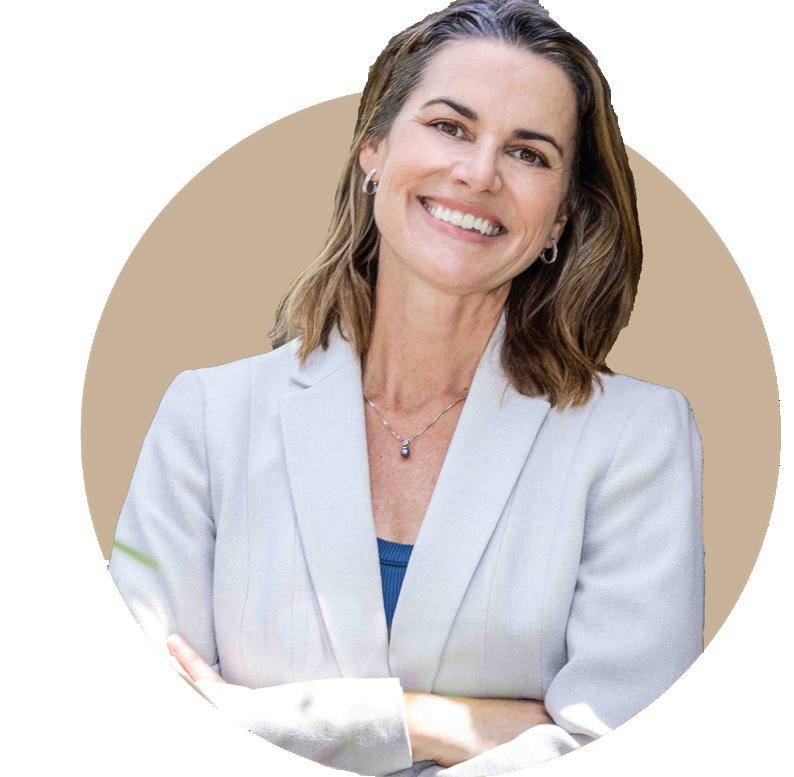
By Rebecca Teahen, columnist
Sit down at the table. Don’t rock the chair back. Use a fork. Don’t leave the table until everyone else is finished. (Yes, I sound like my mom. I’ve accepted it.)
I love good food – and while my kids clearly haven’t caught on yet – I’ve come to understand the importance of gathering around the family table for regular meals.
No one I’ve known has understood the power of the kitchen table like the late Sen. George McManus, Jr. did. In fact, I was recently reminded that he was born on the kitchen table on a farm on Old Mission in 1930! Given that entrance, perhaps it’s fitting that the kitchen table maintained such a prominent position in his life.
I invite those of you who have also spent time around George and his wife Clara’s kitchen table to remember those moments and the stories they shared. For those who didn’t have the pleasure, think of an idyllic farmhouse, kind grandparents and conversations of how you can work together to solve problems and do the most good.
George would talk about leaders from “across the aisle” finding common ground over a meal. He undoubtedly accomplished at least as much sitting at the kitchen table as in any formal meeting room. George and Clara created a tremendous legacy through their agricultural operations, community service and
leadership, hard-working family, charitable giving, and more.
What if your legacy plans could unfold as beautifully as you imagine just by talking with your family over a warm meal at your own kitchen table? Could it really be that simple?
Think about it. When our kids share their challenges at school over the dinner table, our natural inclination is to guide their responses through the lens of our values.
When we hear news of tragedy near and far, we might discuss as a family ways we can help. This begins to teach our children the power of philanthropy and how our family chooses to give.
As the school year ends, the older kids start thinking about summer jobs and saving up toward their own goals. This puts their future into perspective.
As we raise our kids, we are preparing them to face obstacles on their own. And in turn, we’re preparing them to face life’s challenges without us being there to guide them. So, trust me. Your kids are ready to talk about your legacy plans. This begs the question ... are you ready?
If you’re not, then make the time to gather your thoughts and prepare. Find a quiet moment at the table with your notepad and pencil and make some notes to guide your planning conversations.
These thought-starters will be well-informed by all the earlier family meetings you’ve had over mealtimes past:
• Your values and hopes for your family’s future.
• Your charitable priorities.
• Wishes for family property (real estate and other keepsakes).
• And if you don’t already have it done, ask other family members to help compile family history.
Once you’ve gathered your thoughts, call an all-family meeting and invite other members to contribute as well.
When it’s finally time to put these plans into action, make sure to bring in experts to the planning table. Reach out to your financial advisor, estate attorney, CPA and others to ensure that you’re not overlooking anything.
Questions to consider:
• Are your basic estate plans up to date and properly structured to achieve your goals?
• Is there a need for a charitable trust or a special needs trust to care for a loved one? Is your family considering a charitable foundation or donor-advised fund?
• Are there plans for one or more children to inherit real estate? If so, have other assets been allocated equitably or as desired?
• If the plan is to sell real estate, does your family have a relationship with a trusted wealth manager to manage the proceeds from that sale wisely?
You’ll be working with your professional advisors to put these plans in place, but don’t forget to bring these elements back to the kitchen table to share with your family. Together, you’ll craft a stronger plan, and the next generation will be invested in the success of this process.
If you’re struggling to navigate this type of in-depth family meeting, reach out to your wealth planning team. Professional advisors are happy to help facilitate these conversations. As difficult as they can be now, it only gets harder as time passes, and sadly, you may miss your opportunity all together.
With a better understanding of your goals, your family and advisors will be well prepared to help implement the plans when the time comes.
So, what are you waiting for? Pull up a chair, pour a cup of coffee, and start the conversation. Your family’s legacy begins at the kitchen table.
Rebecca Teahen, CIMA® is a financial advisor with Baird Inc. in Traverse City and serving clients nationwide. Send a note to rteahen@rwbaird.com to join her email list. The information offered is provided to you for informational purposes only. Robert W. Baird & Co. Incorporated is not a legal or tax services provider and you are strongly encouraged to seek the advice of the appropriate professional advisors before taking any action.

By Eric Braund, columnist
Retiring successfully means more than just stepping away from work – it’s about creating the lifestyle and legacy you envision for the next chapter of your life. For affluent families and high-net-worth individuals, retirement planning requires an extra step of careful strategy, tax-conscious moves and thoughtful financial stewardship. Here’s your comprehensive checklist to help set your retirement up for success.
Retirement isn’t just about the numbers; it’s about clarifying and mapping out how you want to spend your time. As someone with significant assets, your financial means often allow the pursuit of passions, extensive travel and engaging in philanthropy, but it’s essential to be intentional about your lifestyle goals. Start by setting personal goals: What do you want your retirement to look like? Consider your desires around travel, hobbies, volunteer work and time spent with family. Also, plan for the transition itself, as many individuals struggle with the identity shift that comes when stepping away from a career. Working with a coach or mentor can be helpful in navigating this change. Staying engaged is equally important — maintaining social connections and having a sense of purpose can significantly enhance your overall satisfaction in retirement.
As you craft your retirement plan, managing taxes is just as important as managing investments. Tax efficiency is even more vital in retirement, as the way and timing of your withdrawals can leave a big impact on your tax bill.
It’s important to review your retirement accounts and understand the tax implications of withdrawing from various sources, such as IRAs, 401(k)s and taxable brokerage accounts. In retirement, drawing from these accounts strategically can help reduce taxes. Consider Roth conversions as well: Converting

traditional IRAs to Roth IRAs before or early in retirement can reduce taxes on required minimum distributions later on.
Data confirms that high-net-worth individuals often enjoy longer lifespans, which also means more years of potential healthcare expenses. One option to consider is long-term care insurance. Even if you are self-insured and have enough personal savings and investments to cover potential medical costs, long-term care coverage can shield your assets while offering comfort knowing you will be cared for in your later years.
It’s also important to review Medicare options, as Medicare doesn’t cover all healthcare needs. Supplemental plans can help fill in the gaps. If you prefer premium care, you should factor in the costs of concierge medical services or high-quality long-term care facilities. To confirm you have the right coverage, discuss healthcare and longterm care options with your advisor, who can help tailor a plan that meets your specific needs.
Estate planning is a critical component of any retirement plan to distribute your wealth according to your wishes, and for affluent individuals, it goes beyond just having a will. A comprehensive estate plan includes trusts, gifting strategies and a tax-conscious legacy plan.
It’s wise to regularly update your beneficiaries and estate documents to reflect any life changes and current wishes. Trusts can be particularly useful for managing assets, reducing estate taxes and aligning your wealth with your intentions.
If charitable giving is part of your retirement vision, now is an ideal time to plan for it in a way that’s both meaningful and tax-efficient. Donor-advised funds, charitable remainder trusts and outright gifts are all strategies that can help increase your impact.
Donor-advised funds allow you to make a charitable contribution, receive an immediate tax deduction and distribute funds to charities over time. Charitable remainder trusts can provide income for you or your beneficiaries, with the
remainder going to charity after a set period. Additionally, annual gifting to family or charities can be a valuable part of your financial plan and estate strategy.
Partnering with experienced advisors before and during retirement allows you to make well-informed decisions that can greatly influence your financial well-being. Begin by consulting a fee-only Certified Financial Planner® professional, an advisor who is held to a fiduciary standard. A reliable professional focused on your best interests can help prepare your family for the many rewarding experiences that come with retirement.
Eric Braund, CFP®, CRPC® is the founder and CFO at Black Walnut Wealth Management, a financial advisory firm providing counsel and fiduciary financial services to individuals, families, and private foundations throughout the Traverse City and northern Michigan region. Contact him at (231)421-7711 or visit BlackWalnutWM.com. Braund is an Investment Advisor Representative with Dynamic Wealth Advisors, dba Black Walnut Wealth Management. All investment advisory services are offered through Dynamic Wealth Advisors.

A seasoned flooring professional with over three decades of experience in Traverse City's design industry, Jason Harris is a dedicated sales consultant at Bay View Flooring & Design Center. He specializes in helping homeowners transform their spaces through expert flooring solutions, whether for new construction or remodeling projects. We sat down with Jason to get his insights on life at Bay View:
“My favorite aspect of the job is helping clients bring their ideas to fruition. I enjoy ensuring that everything works together—style, color, design, etc.— and is properly installed for the intended application. Sometimes, the smallest details are the most important. It's also very interesting to meet people from all walks of life and get to know them personally while assisting them with their projects.”
TOP RECOMMENDATION “I believe one of the most undersold products we have is the new laminate flooring. It is the most scratch-resistant and won't fade or stain. In addition, many of these floors now have moistureresistant properties, allowing them to be used in most areas of the home.”
“My most memorable project in the last year was helping a local couple facing daunting medical issues complete their project within a short timeframe. It allowed me to assist them so that he could rest assured knowing his loved one did not have any unfinished home projects.”
NEW + NOTEWORTHY
“International Flooring Co. is the company and Canopy is the brand discerning homeowners are going to want to keep on their radar It's quieter, features new visuals, and offers competitive pricing within its category. With exclusive rights, Bay View Flooring is the only retailer in Northern Michigan that showcases and sells this premium line.”
“I am excited to share the newest colors and styles that manufacturers are introducing in the luxury vinyl plank category. Each year, these products improve in durability and appearance due to advancements in the manufacturing process.”
“First impressions are generally best; they will be products that you'll enjoy for years to come. If you don't initially like something, it's unlikely that you will enjoy it in the future.”
jason@bayviewflooring.com

Building in beautiful Grand Traverse County means stunning natural scenery, a thriving community and the perfect balance of outdoor adventure and modern convenience—making it an incredible place to call home!
And with our newly improved EPIC-GT self service portal, we’re streamlining communications for users, making applying for permits and inspections easy and helping to speed up the approvals process. Our goal is to give our community a painless experience with permitting with better communication than before.
VISIT US AT WWW.GTCOUNTYMI.GOV/2616 TO LEARN MORE ABOUT BUILDING & PERMITS IN GRAND TRAVERSE COUNTY.

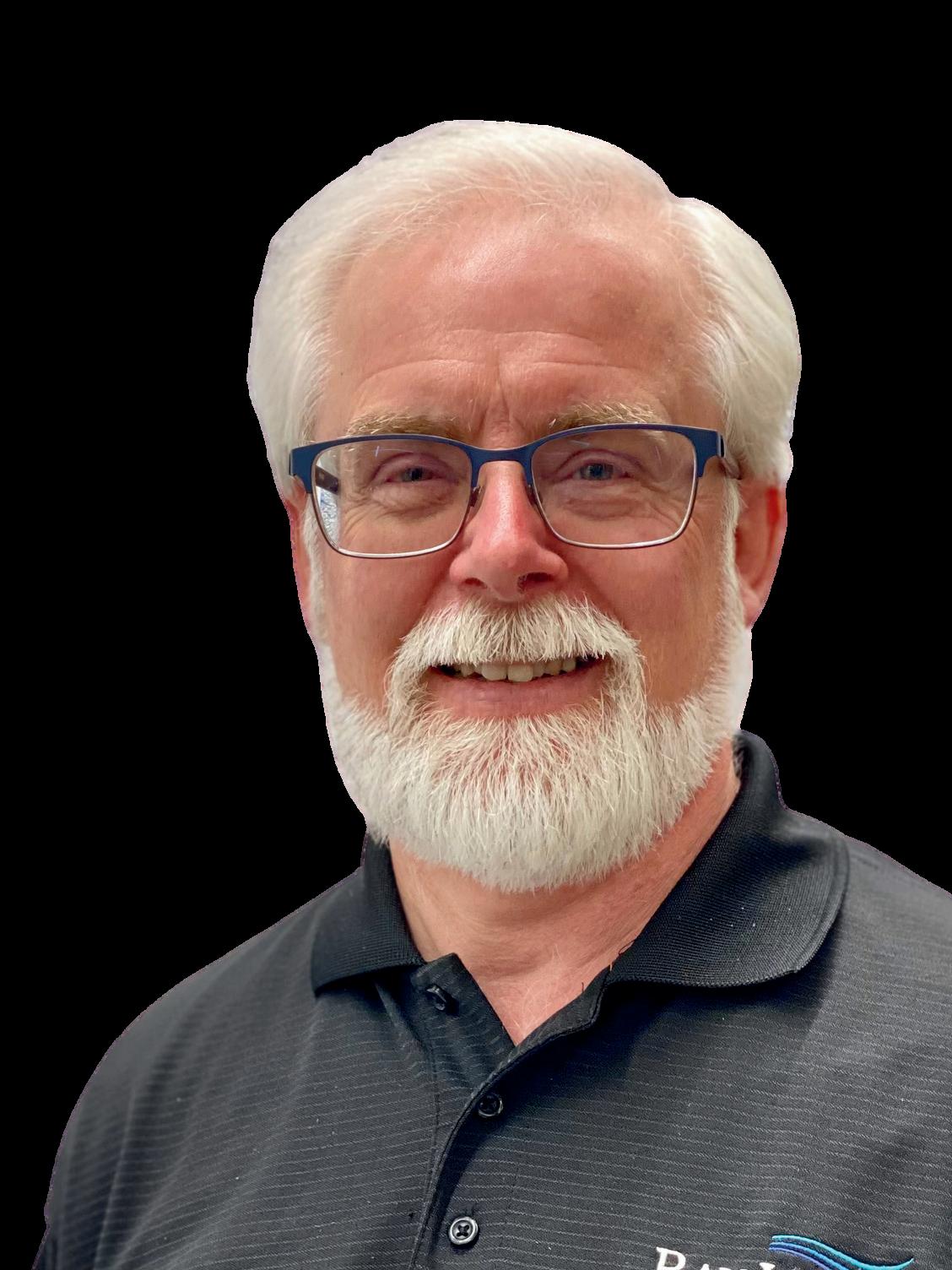













By Craig Manning
It’s based in Michigan, has more than 11 million customers, and ranks among the top 25 American banks in terms of total assets. In fact, the bank in question, Ally Financial, is the one and only Michigan-based bank to rank among the top 100 banks in the United States.
While Ally has become a legitimate player in the financial world since it launched in 2009, you won’t see its logo on a single building in the Traverse City area, unlike similarly ranked Midwest-based banks like Fifth Third and Huntington.
How come Michigan’s biggest bank doesn’t have an on-the-ground presence in one of Michigan’s key markets? It’s not that Ally’s leaders have anything against Traverse City. Rather, it’s that Ally doesn’t have a single brick-and-mortar banking branch anywhere.
Instead, Ally is an all-online bank, part of a growing class of digital-only institutions that offer most of the key services of a traditional bank – deposit accounts, debit and credit cards, ATM withdrawals,
and loans, to name a few – without the brick-and-mortar touch points. While digital-only banks still don’t have the power or user base of long-running traditional banking institutions, some 10% of Ameri-
Not so long ago, the prospect of a bank with zero physical branches would have been unthinkable. Mobile check deposits
Despite the rise of digital banking and the potential savings advantages of online-only banks, the majority of Americans still do their banking with institutions that have brick-and-mortar branch locations – at least for now.
cans have now made the switch. Beyond Ally, the online-only banking space has a long and growing list of players, including Chime, SoFi, Quontic, Bank5 Connect, NBKC, and First Internet Bank. Are these banks legitimate players in the industry, or are online banks a niche offering, or maybe even a fad? This month, the TCBN takes a closer look at this growing trend, and at what you need to know about digital-only banking.
didn’t even become legal in the U.S. until 2004, courtesy of the Check Clearing for the 21st Century Act. Two decades later, digital banking practices have skyrocketed, and in-person bank visits have dramatically declined.
According to a survey on digital financial literacy conducted last year by Capital One, at least seven out of 10 American households are enrolled in some form of digital banking. Ninety-five percent of those consumers bank online often or
occasionally, 86% use it to check balances and transactions, 77% use it to pay their bills, and 60% use it to transfer money between accounts.
Comparatively, another study last year by Self Financial found that fewer than 40% of Americans still pay monthly visits to their banking branch, let alone weekly visits (11.3%) or daily visits (7.3%). The same study reported that the number of bank branches in the U.S. was still on the rise until 2012, when it peaked at 82,461. That number has been in constant decline ever since, and dipped to less than 70,000 in 2022 for the first time since 2004. Based on current trends, Self Financial predicts that physical banking branches could be extinct in the U.S. by 2041.
The pros and cons
Online-only banks have leveraged these evolving consumer trends into a business opportunity. Because digital banking has become so commonplace, online-only banks are able to serve their customers in many of the same ways that traditional banks do – which is to say, via websites,
online portals, and mobile apps. Most online banks also have 24/7 customer support, nationwide networks of ATMs, and a variety of different account options to choose from, including checking, savings, money market accounts, and certificates of deposit.
The difference – and the benefit most proponents of online-only banks tout – is that fully digital banks have significantly lower overhead expenses than traditional banks. That’s due largely to the lack of real estate holdings. Owning or leasing branch locations amount to a costly section of the ledger for a typical banking enterprise, and digital banks – even if they have a few office locations or one-off branches here or there – are largely not carrying any of those expenses.
All-online banks can pass those savings on to their customers, usually in the form of lower fees or higher account yields. For example, according to the Ally Financial website, the bank’s savings account earns a 3.8% annual percentage rate (APY) on all balance tiers. Comparatively, the Huntington Bank website shows a maximum 3.55% APY across its highest-yielding savings accounts, for balances between $5,000 and $2 million.
There are widely cited cons around digital-only banks, too. The lack of physical location means in-person, face-to-face conversations with banking represen-
tatives are not an option. It also means that certain common bank services –including safety deposit boxes, notary services, cashier’s checks or money orders, currency exchanges, and even cash deposits – are either not possible or are more difficult to access.
The local perspective
With more customers eyeing the potential benefits of online-only banks, we wondered: What do local financial experts think of the trend? We checked in with Dawn Hemming, a long-time financial advisor and the president of Traverse City’s hemming& Wealth Management, to get her view on the matter.
While Hemming says digital-only banking is largely “out of the wheelhouse” for hemming&, she did have a few thoughts, both about the draws of online banks and the potential pitfalls.
“Digital banks tend to have better technology options and higher-yielding savings accounts,” Hemming said. She also notes that, since many customers – especially younger ones – are already accustomed to digital transactions, there’s not a big learning curve to navigate.
“We’ve seen Gen X and millennials with a comfort opening these accounts – although, anecdotally, they seemed to be more popular when interest rates were harder to find on savings accounts,” Hem-

ming added. “Ally is a popular one based in Michigan; it’s the old General Motors auto financing bank that rebranded after the financial crisis of 2008.”
Still, Hemming says she always encourages her clients to tread carefully when deciding to keep their money with a digital bank.
“It’s difficult to sort out the legitimate offerings with FDIC-insured banks,” Hemming concluded. “When looking for a digital-only bank, make sure to verify FDIC insurance. You can confirm FDIC insurance by using the FDIC’s online BankFind tool.”
Despite the rise of digital banking and the potential savings advantages of online-only banks, the majority of Americans still do their banking with institutions that have brick-and-mortar branch locations – at least for now. According to a 2022 Finder survey, just 8% of American adults had online-only bank accounts at the time – though, another 4% say they plan to open one in the near future. Finder projected that 15% of Americans would be doing their banking with digital-only banks by 2027.


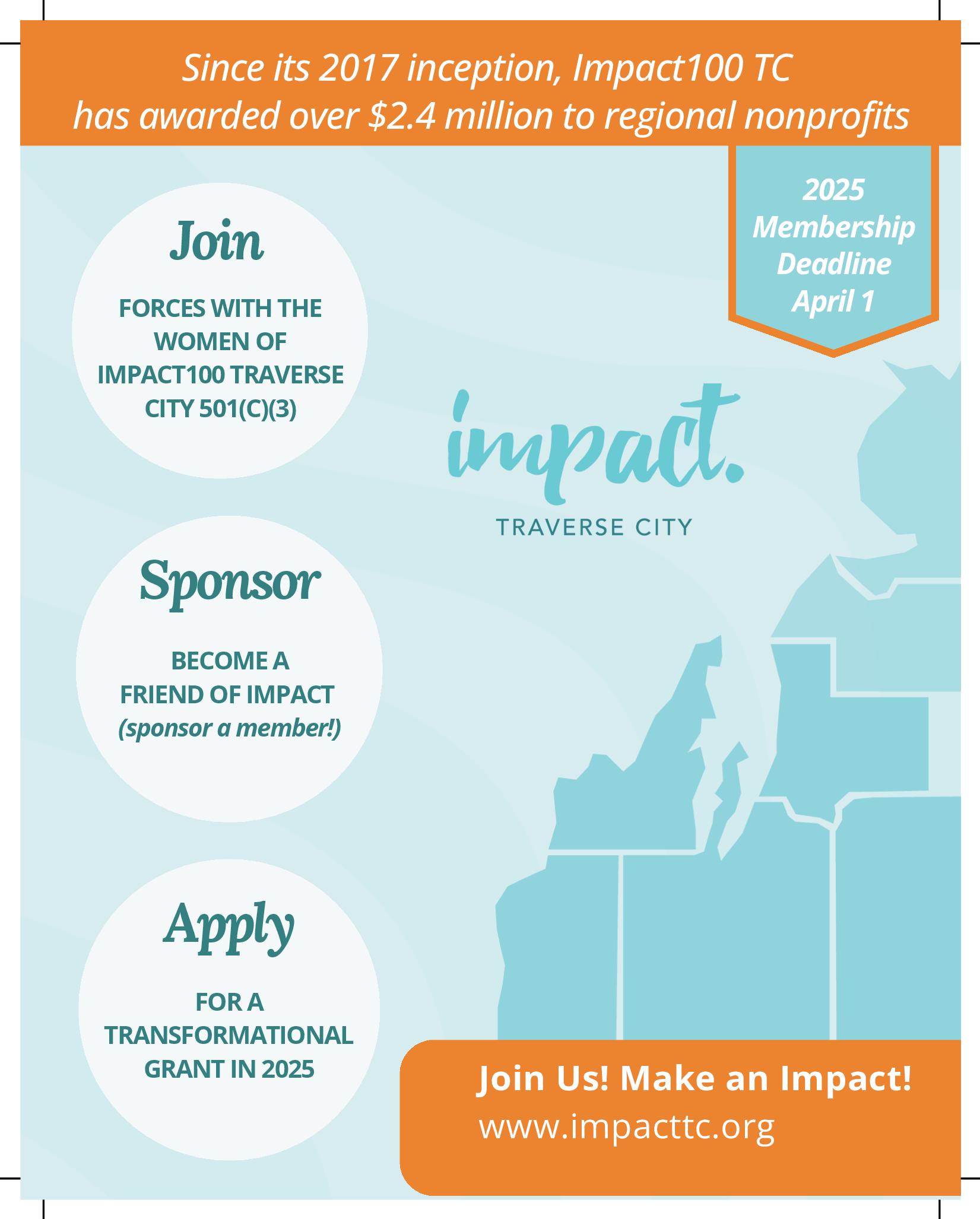


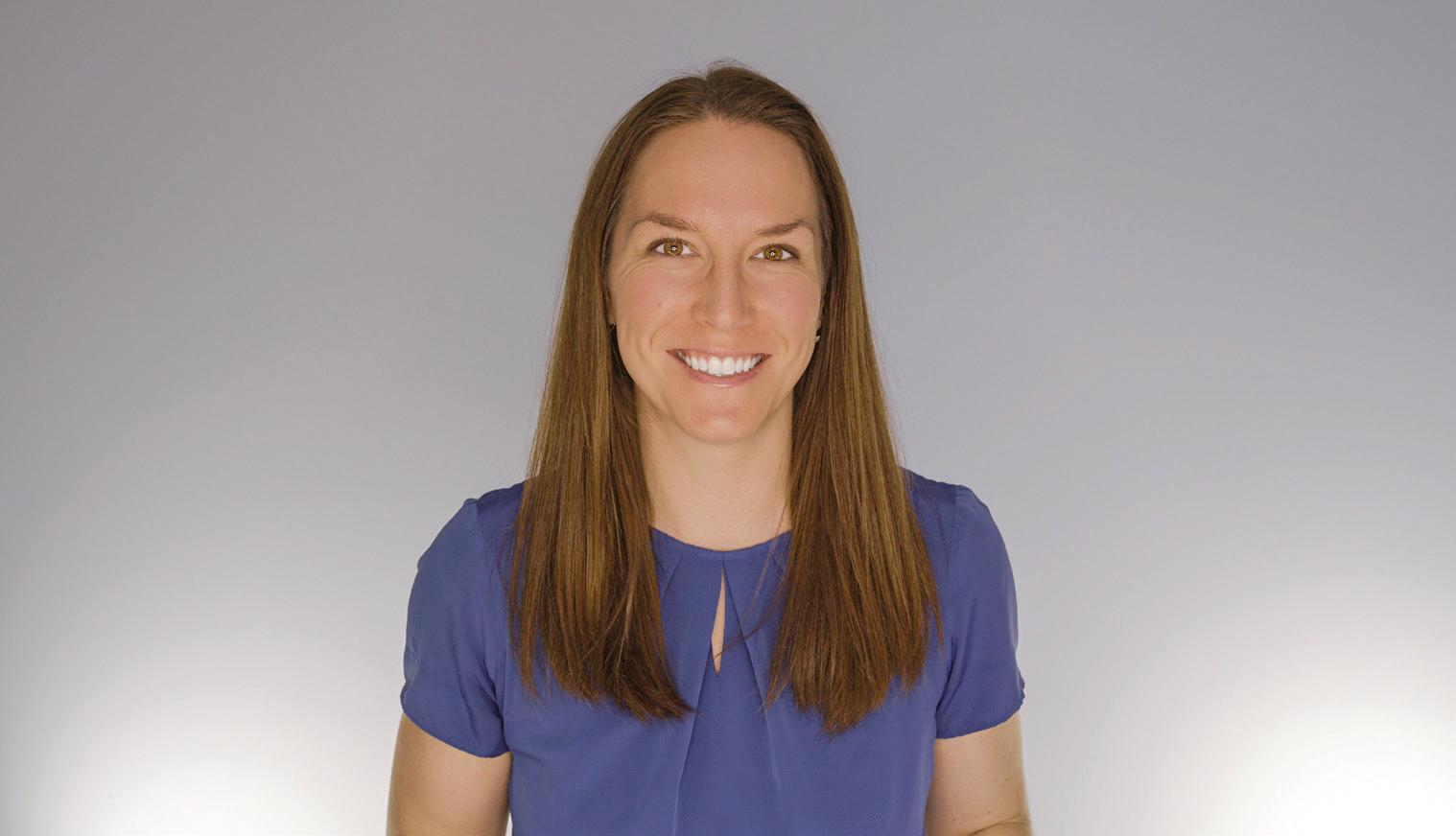
We are now offering injections to treat the appearance of dynamic wrinkles that appear when you make facial expressions. The product we are offering is called Xeomin, which is preservative free, but offers the same active ingredient as Botox. Treatments are done right at our office which provides convenience, privacy, easy-access and continuity of care for your peace of mind!






By Rick Garner, columnist
In retirement, your income will come from various accounts and investment vehicles. Some common income sources include required withdrawals from 401(k)s and IRAs, automatic income from Social Security and pensions and optional income from Roth IRAs and taxable investment accounts. By implementing effective tax strategies, you can potentially reduce your tax burden and make your hard-earned savings last longer.
Creating tax diversification and maximizing your retirement income requires more than having and withdrawing funds from various account types – it’s about timing and strategy. Optimal retirement tax strategies may change from year to year based on tax laws, your income needs and your tax situation.
Here are a few common diversification strategies to consider:
Making strategic withdrawals involves mixing and matching withdrawals from different account types. By carefully sequencing your withdrawals from Roth, traditional and taxable accounts, you can potentially reduce your overall tax burden.
Income smoothing involves balancing your income across years. This retirement withdrawal strategy aims to avoid spikes in tax brackets that might lead to increased Medicare premiums or higher taxes on fixed income. This approach might involve spreading out taxable distributions to mitigate required minimum distribution (RMD)-driven tax effects in later years.
Understanding marginal tax rates is crucial to avoid unintended tax consequences. Large RMDs or other substantial withdrawals can push you into higher tax brackets. Effective, tax-efficient retirement withdrawal strategies take these factors into account in order to optimize your longterm financial picture.

Unlike traditional IRAs, owners of Roth IRAs do not have to take required RMDs, which can afford greater control of your taxable income during retirement. There are income restrictions on who can contribute to a Roth IRA. However, converting traditional IRA funds to a Roth IRA allows you to take advantage of a Roth’s potential benefits regardless of income level. It is also possible to convert pre-tax funds in a 401(k) plan to a Roth IRA.
Converting to a Roth IRA will require that you pay income tax on the amount converted in the year of the conversion, but that could be the most tax-intelligent approach for the following reasons:
• Your tax bracket could be lower today than it will be in retirement.
• Lower income in a tax year may allow you to convert funds to a Roth IRA with less tax impact.
• Roth IRA funds can continue to grow without being diminished by RMDs.
• Qualified distributions from a Roth IRA – by you or your heirs – will be income tax-free.
• A Roth IRA could lower your income tax bracket in the future because funds were taxed upon contribution rather than on withdrawal.
• Roth IRA conversions are not subject
By carefully sequencing your withdrawals from Roth, traditional and taxable accounts, you can potentially reduce your overall tax burden.
to a 10% federal additional tax.
• A Roth IRA conversion is not the right solution for everyone. Rules and restrictions apply, so the decision requires careful consideration. Working with a Certified Financial Professional™ can help you maximize your retirement savings, stay informed about changing tax laws, and
adjust your strategy as needed to meet your personal financial goals.
Rick Garner, CFP® is the director of wealth management and a CERTIFIED FINANCIAL PROFESSIONAL™ at DGN Wealth- care, LLC. Contact him at RGarner@DGNCPA.com. The views and opinions presented in this article are those of Rick Garner and not of Avantax Wealth Management® or its subsidiaries. Securities offered through Avantax Investment ServicesSM, Member FINRA, SIPC. Investment advisory services offered through Avantax Advisory ServicesSM. Avantax affiliated financial professionals may only conduct business with residents of the states for which they are properly registered. Please note that not all of the investments and services mentioned are available in every state. Certified Financial Planner Board of Standards, Inc. (CFP Board) owns the CFP® certification mark, the CERTIFIED FINANCIAL PLANNER™ certification mark, and the CFP® certification mark (with plaque design) logo in the United States, which it authorizes use of by individuals who successfully complete CFP Board’s initial and ongoing certification requirements.
By Craig Manning
When six weeks’ worth of surgery recovery gave her a whole lot of time on the couch, Traverse City’s Lisa McKolay decided to make the time count. The result? A series of six self-published books about financial literacy, all geared toward kids and teens.
While her bachelor’s and master’s degrees are in psychology, McKolay learned the world of finance working for her mom, local investment advisor Dawn Hemming, at hemming& Wealth Management. Last January, she launched her own firm, called McK Financial Transitions Specialists, which combines her finance and psychology backgrounds into a business that seeks to “guide individuals and families through life’s pivotal financial transitions with clarity and confidence.” Such transitions may include divorces, retirements, and career changes.
Despite that career history, McKolay insists she never intended to make either finance or psychology part of her first foray into children’s fiction.
“I just love writing, and I was going to write a kid’s book about my dog, Lola, because she’s getting old and I wanted to honor her in that way,” she said. “But I guess my work just clicked in, and they ended up being financial literacy books.”
During her period of post-surgery bed rest, McKolay wrote six different books in a series she’s dubbed “Lola and Pearl: The Happy Adventurers.” The books follow the tales of a girl named Pearl and her playful beagle Lola, as they learn about budgeting and smart financial decision-making. Specifically, McKolay delves into the 75/15/10 rule, which encourages budgeting 75% for needs, 15% for wants, and 10% for long-term savings.
Recent years have seen a mounting call for budgeting best practices to be taught in American schools. Each year, the Center for Financial Literacy at Champlain College in Vermont compiles a nationwide report card, grading states on how many curricular requirements they have for personal finance education at the high school level.

In 2023, five states – including California, Massachusetts, and Washington, D.C. – received failing grades, meaning that those states had no existing financial literacy demands for high school students and no pending legislation to implement such requirements. Just seven states –Alabama, Iowa, Mississippi, Missouri, Tennessee, Utah and Virginia – received “A” grades, indicating at least one full semester of personal finance curriculum for all students.
Michigan got a B, with Champlain College noting that the state already had an economics requirement and would soon be adding a personal finance element to diploma requirements.
McKolay, who grew up and went to

school in the Traverse City area, says she wrote her books in part because she couldn’t remember the topic of personal finance ever coming up in a classroom when she was young. While she thinks any past generation could have used more of a financial literacy primer, though, McKolay thinks the need is much more pronounced for today’s youth.

“The economy is always changing: sometimes, it’s really easy to navigate a financial life; sometimes, it feels impossible,” McKolay said. “Right now, we’re in the latter situation. Things are just really expensive right now now, and we need a way to communicate how to navigate that world. The way that things are now – the way things cost – we didn’t used to have to think about it quite so hard. Now, you have to pay a lot more attention to detail, and I think kids and teens need to be ready for that.”
Historically, one of the challenges of imparting advice about financial literacy to kids has been finding ways to make the topic relevant and engaging. The question has always been: How do you get young
people to care about budgeting when, in most cases, they haven’t had to worry about that kind of thing yet?
While McKolay is hoping that framing everything around the stories of a girl and her dog will make the financial lessons of her books more accessible and relatable to kids, she thinks the key to teaching financial literacy at a young age lies in really hammering home the benefits.
“I think for everybody, but especially kids, successfully teaching financial literacy is not about setting strict rules,” McKolay explained. “It’s not about saying, ‘You have to stop yourself from buying these things; you have to have restraint.’ The message of these books is more like: ‘Hey, if you use these concepts, you’re going to have a ton of freedom to live whatever life you want, both now and in the future.’ It’s not about limiting yourself; it’s about giving yourself options.”
Despite her confidence in the message, McKolay says she initially “didn’t think these books would go anywhere besides my own bookshelf.” In the weeks since the series’ January 7 publication, though, she’s started getting interest for her books from multiple local entities.
“I just had a meeting with the librarian at Old Mission Peninsula School, and I’m going to do an after-school program there for fourth and fifth-graders, teaching basic concepts of financial literacy,” McKolay said. “I’ll also be doing a similar thing at Traverse Area District Library, except that one will be geared more toward teens. And then, in my work as a financial transition specialist, I work with a lot of attorneys and therapists, and a lot of them have asked for copies of my book to put in their offices. So, the feedback has been really positive so far.”

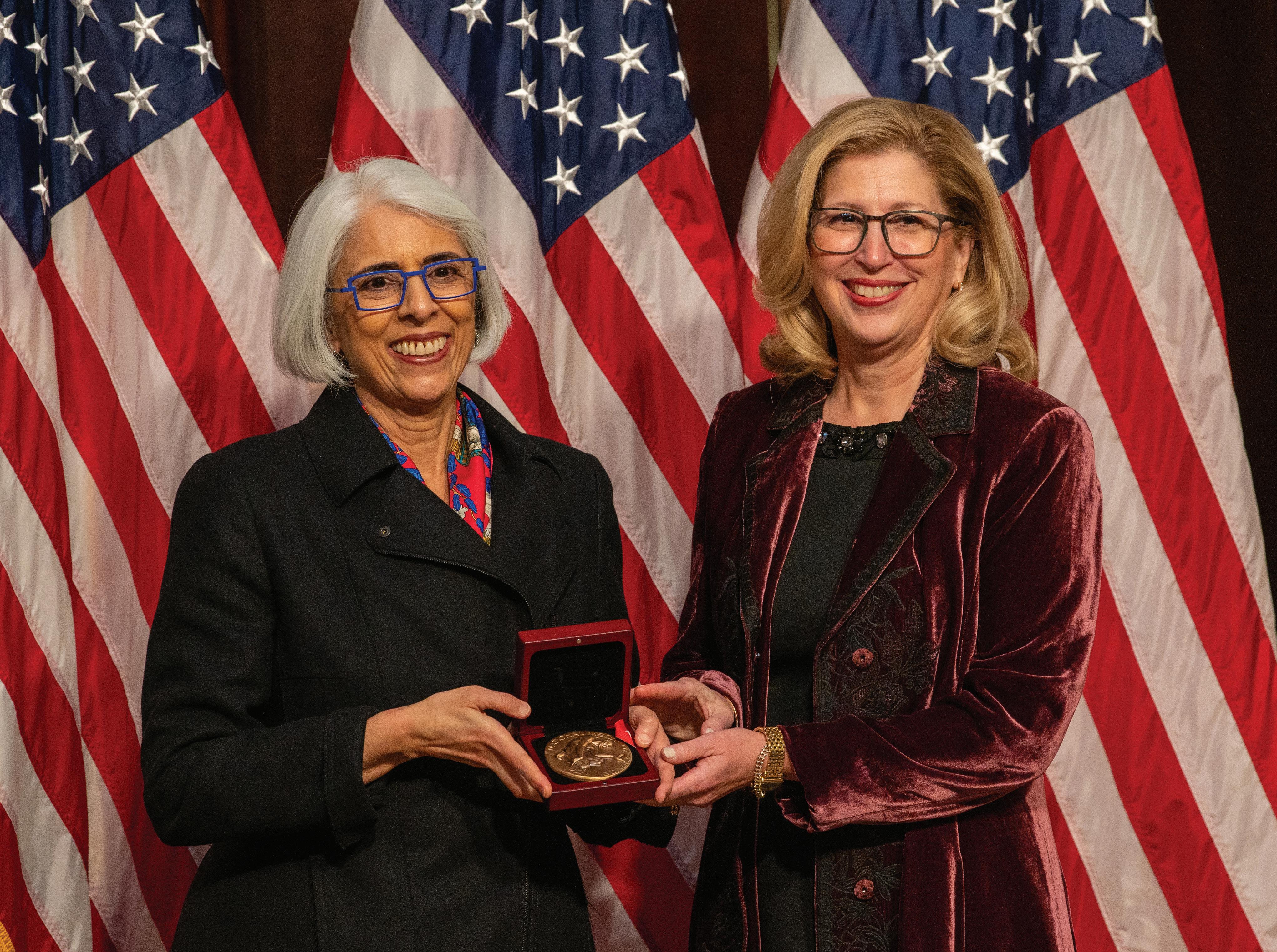
At Michigan State University, we applaud Teresa Woodruff, who was bestowed the National Medal of Science by President Biden. A leader in reproductive science and a dedicated mentor, Woodruff’s innovative research has resulted in breakthroughs and independent discoveries that have made an immeasurable impact on the lives of thousands of patients and their families around the world. MSU congratulates this exceptional Spartan and president emerita on her second presidential honor, recognizing her groundbreaking work and humanitarian academic leadership.

MSU Research Foundation Professor College of Human Medicine College of Engineering

By Art Bukowski
Boating has long been a favorite pastime – and major economic driver – throughout Michigan. This is especially true in northwest Michigan, where the centerpiece Grand Traverse Bay and many high-profile inland lakes are tied to countless hours of fun and millions of dollars in spending.
After the COVID pandemic, in which dealers could barely keep boats in stock, sales have come back to earth amid inflation, higher costs, economic uncertainty and a return to normal enthusiasm levels. Meanwhile, those looking to lock down a slip in Grand Traverse Bay are waiting many years for an opportunity.
The TCBN connected with several people in the boating word to see what’s trending on the water and the sales floor.
Sales trends: ‘A return to normal’
COVID was a very hard time for many businesses and individuals, but it was as hot as can be for boat sales. Boating was one of the few activities people could do together with limited restrictions, and with pretty much everything else shut down, a lot of people went out and bought a boat.
“Everything that dealers could get in stock during COVID and probably almost two years after, they couldn’t keep,” said Amanda Wendecker, a spokeswoman for the Michigan Boating Industries Association (MBIA). “Stuff was coming in without cushions and they would still sell
it immediately – it was crazy.”
But in the years since, the industry has slowed considerably, insiders say. Manufacturers firing on all cylinders finally got inventory back up right as the COVID-driven boost began to wane. Add climbing interest rates, higher prices, political uncertainty and other factors, and you’ve got all the ingredients for a hangover.
Wendecker points out, however, that Michigan had consistent year-over-year sales growth from 2009 until the streak broke in 2023 (2024 numbers aren’t yet available). It was never going to last.
“That was sort of hard to sustain,” she said. “What we’re seeing here is a correction.”
But things are looking up. Local dealers contacted for this story are all feeling bullish about the coming year, with early first quarter indicators already outpacing last year’s numbers.
“I feel like we were still coming down from that COVID surge in 2024, but we found what I believe was the bottom of the trough last year and we should be on a nice path going forward,” said Kyle Oleson, general manager of Walstrom Marine in Traverse City. “Interest rates have stabilized, boat prices have stabilized, the election is behind us and…consumer confidence is better than it was a year ago.”
Over at Irish Boat Shop in Traverse City, General Manager Colin Texter thinks fondly about the “great, great times” of COVID boat sales, but said he’s still expecting a strong year.
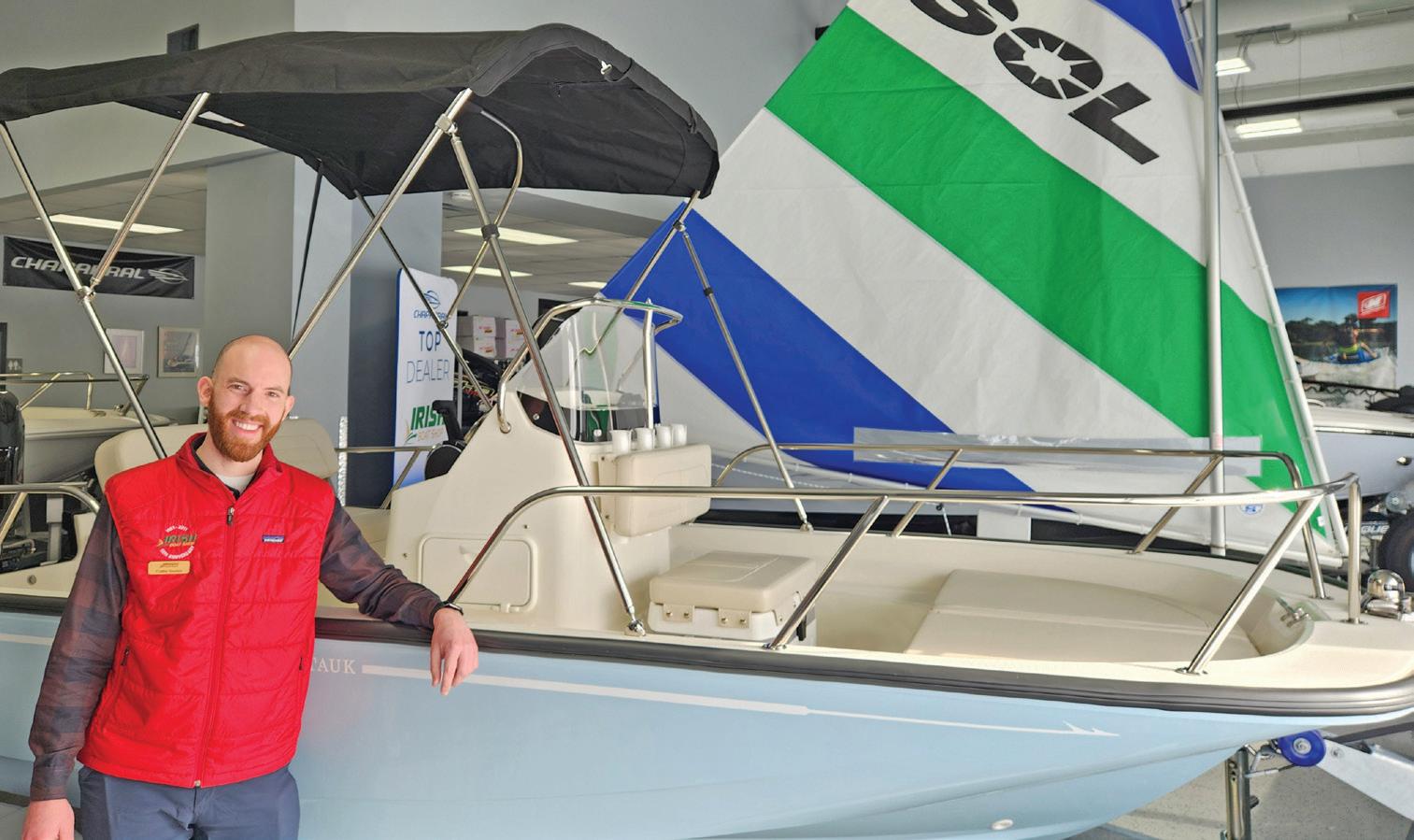
“We’re just seeing a return to normal,” he said. “Manufacturers are still trying to build as much as they can, but now it’s becoming more about managing your inventory and making sure you’re not overstocking.”
Like everyone else trying to sell expensive items, boat dealers have their fingers crossed for the economic and political stability needed to put customers in a buying mood and manufacturers operating at a good clip.
“If there’s going to be a trade war, that would be a concern as it would probably affect us on the supply side,” Texter said. “Almost all the boats we sell are made in the U.S., which is great, but a lot of the components that go into those boats are not. You could end up with a situation like we had in COVID where the supply
chain is broken.”
Wendecker says a return to a pre-COVID state of affairs brings plenty of positives.
“Inventory is available, and the deals and incentives and rebates that we haven’t really seen since before COVID are back,” she said. “I’m hopeful that dealers will start moving some of the inventory that they do have.”
Local dealers will continue to put a very heavy emphasis on their service departments. Walstrom has more than 50 technicians on staff ready to tend to problems, a robust support team that forms a big part of the company’s sales pitch.
“When you’re spending half a million bucks on a boat, your expectation is that the dealer can service the boat in a timely fash-
ion, especially knowing how short our season is, how valuable every single nice day is and how much is on the line,” Oleson said. “Boating is a very social activity, and people have their entire summers mapped out.”
Unfortunately, the staffing issues that continue to plague industries of all kinds are starting to be particularly apparent in boat dealer service departments. It’s something the MBIA is on top of.
“We have an aging demographic with our current industry professionals, especially marine techs. We need them now, and we’re going to need them in the future,” she said. “We’re working hard to bring awareness to the industry and develop training programs around the state at a variety of levels to help people get into the profession.”
Boat trends: Technology and new layouts
Among trends in the boats themselves is
user-friendliness and easier access to boating.
“Things like joystick docking and advanced electronics have made everything easier for boating of all sizes, from driving, docking, water sports and other things,” Wendecker said. “All the advancements that are coming to the screens on cars are coming to the screens on boats.”
Boat layouts are also changing considerably based on changes in boat use, with a premium given to the amount of people you can include in a day trip instead of how many you can sleep comfortably.
“Cruisers that used to have much larger cabins now have a smaller cabin area, and they’ve opened up the hull for more seating space for family and friends to join,” Wendecker said. “People are usually doing more day boating as opposed to taking longer trips and going farther away.”
Also gaining even more popularity (and muscle) is the king of the party – pontoon boats. Once viewed as fit only for puttering
“Things like joystick docking and advanced electronics have made everything easier for boating of all sizes, from driving, docking, water sports and other things. All the advancements that are coming to the screens on cars are coming to the screens on boats.”
– Amanda Wendecker, spokeswoman, Michigan Boating Industries Association

well, they’re so comfortable, they’re so spacious, they’ve got so much power,” said Brett Dense, general manager of Action

Revitalize a Brownfield site, consolidate multiple branches into one world-class Front Street facility
Mike and the Burdco team had such a clear understanding of our vision. They listened to our goals, communicated clearly and worked through the construction challenges we faced. His experience, along with his relationships with subcontractors and township officials made the entire process so smooth.
to all

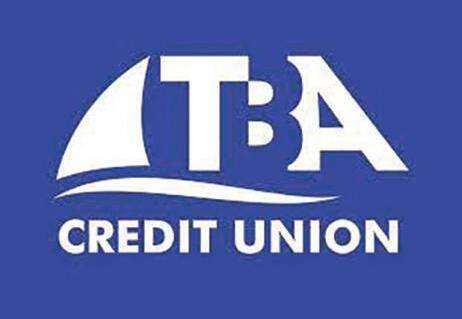


are 416 people on the wait list for one of the 71 seasonal Clinch Marina slips, city public services director Frank Dituri says.
While officials never know how many people will relinquish their slips each year, it’s usually less than a dozen in most marinas. While Traverse City staff shies away from trying to estimate wait times when asked, they still try to set realistic expectations.
“If you say seven years and eight or nine years go by and they’re still a couple of years out, you’d just disappoint them,” Dituri said. “So, we just let them know where they are on the current wait list. We
tell them how many people are in front of them, and we tell them there’s only a couple that turn over every year.”
The situation is even more dire in Elk Rapids, where a whopping 800 people are on the list for one of about 160 seasonal slips, up from about 740 people just last year.
“Number one on the list has been on it since 2014,” Harbormaster Mike Singleton said. “I would say it’s somewhere in the neighborhood of eight to 12 years for our harbor.”
Getting to make the call to a person that has finally arrived at the top of the

list is always fun, Singleton says.
“They’re ecstatic, of course. It’s like they won the lottery,” he said. “It’s a great feeling for them for sure, it’s a good feeling for us, too, because we want people that want to be here.”
There are a handful of private marinas on the bay, probably the most prominent being Center Pointe Marina in Elmwood Township, which has almost 70 slips. There’s about 100 people sitting on that list, administrative manager Kelly Renshaw says. Whether or not more capacity on the bay will ever be added is a big question.

Elk Rapids has expansion plans, and at least some in this world think the case could easily be made for a new harbor somewhere on the bay.
“One thing that the (Department of Natural Resources) is very sensitive of for the people of the state of Michigan is to provide access to our waterways,” said Dan Jenuwine, Elmwood Township’s harbormaster. “So I think that for the right township or city with the right plan, there’s a probably a lot of money available from the state to go ahead and do a major development.”


By Kierstin Gunsberg
Lately, there’s been a whole lot of talk about blue economy jobs, especially in the technology sector where engineers, scientists, and even some analysts are making six figures.
With hundreds of miles of Great Lakes shoreline and a wealth of inland watersheds, northern Michigan seems like it would be a natural hub for those careers.
As it turns out, it’s not – not yet anyway. But momentum is growing.
Michigan’s blue economy, which includes jobs and revenue from everything from businesses that run fishing tours to the organizations that advocate for water conservation, accounts for nearly one in five jobs statewide.
The caveat is that most of the yearround and financially sustainable opportunities are in science and technology roles which are few and far between Up North. There’s a handful of jobs working for NoMi-based freighter companies that require tons of travel. Mostly, jobs here span the lower-paying seasonal tourism industries like boating, fishing and water sports.
And while those sectors – and the hospitality businesses impacted by them – are vital to our area, blue leaders see an opportunity to grow northern Michigan’s economy and improve its workforce salaries through a stronger education to career pipeline.
Chris Symons, the education coordinator for Inland Seas Education Association in Suttons Bay wants to see more emphasis on conservation jobs.
“We have this incredible network of waterways,” he said. “What we are looking at up here for the future is focusing on science and gaining a better understanding of what we can do to better protect and maintain our water here. Especially when it comes to how invasive species are affecting the Great Lakes and how the Great Lakes affect people’s health. It’s imperative that we understand everything that goes into that.”
Protecting the integrity of the Great Lakes requires a tradeoff. Strict environmental rules, like bans on oil drilling and tight parameters for commercial fishing mean long-term sustainability, but they limit the short-term growth of higher-paying blue economy jobs like deep-sea engineering, which pays an annual salary of right around $170,000.
Bringing higher-paying blue jobs Up North
Even though the region’s blue economy has experienced a slow and mindful growth, it’s still moving forward.
The Traverse City Freshwater Research & Innovation Center is currently in development and expected to be a major player in the growth of blue industries.
At the same time, there’s a push to attract larger environmental firms. Organizations like Traverse Connect and Northwestern Michigan College (NMC) are actively working to bring those companies here by campaigning for more investment in water technology and conservation-focused industries.
John Lutchko, director of The Great

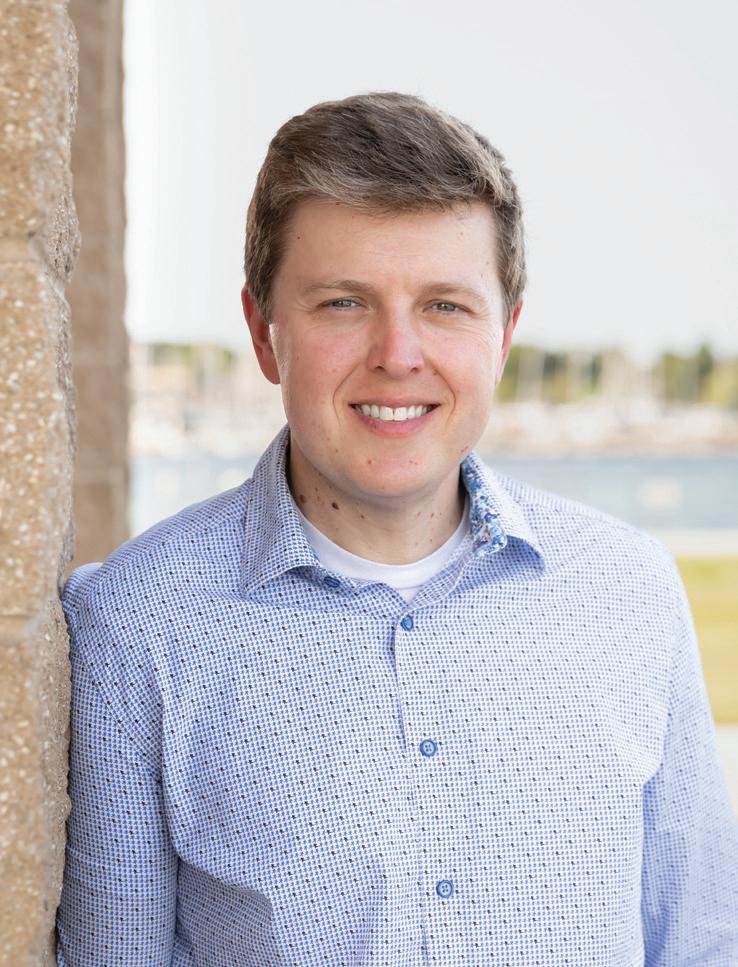
Michigan’s blue economy, which includes jobs and revenue from everything from businesses that run fishing tours to the organizations that advocate for water conservation, accounts for nearly one in five jobs statewide.
Lakes Water Studies Institute at NMC, has seen firsthand how education expansions are paving the way for more opportunities.
A 2013 graduate of NMC’s freshwater studies program, Lutchko spent years working in marine technology before returning to help shape the college’s marine programming.
Now, he’s focused on showing blue
tech companies that Traverse City is the next innovation hub. But, says Lutchko, housing has been a barrier.
“When we’re in meetings with companies, those are the questions that come up. ‘Where are we going to put our people? Where are they going to live, and how are they going to afford it?’” he said.
Even when students receive local job offers, they have to consider whether the

salaries they’re offered make sense for northern Michigan’s cost of living.
Still, NMC’s marine tech program boasts a 100% job placement rate, with a lucky few landing jobs locally – companies like Gordie Fraser, an engineering and surveying firm, have hired for underwater mapping positions.
Some water studies graduates have also found ways to stay. Lutchko shared that one NMC graduate now lives in Traverse City while working remotely for a Canadian technology solution company. Other alumni have taken roles studying invasive species in northern Michigan’s

inland lakes, working with the National Park Service on avian botulism research, or mapping waterways for the federal National Oceanic and Atmospheric Administration.
For marine technology students, the outlook is even stronger.
“By the time they’re completing their last semester, they often have two, three, or even four job opportunities on the table,” Lutchko said.
The catch, of course, is that most of those opportunities aren’t based in Michigan, leading to the next challenge for a local blue economy: losing talent to

larger markets. Places like Texas, Florida, California and even inland states like Colorado offer more jobs and more money for educated candidates.
Matt Hirsch, coordinator of NMC’s Great Lakes Water Studies Institute, understands that reality well. His career in marine biology took him from North Carolina to California to northern Michigan to be closer to family, with plenty of travel along the way.
“A lot of people in science careers have to chase the job a little bit, especially if they’re unwilling to travel for long stretches,” he said, adding that
many of the industry’s top earners in northwest Michigan are those with lots of education under their belt, who’ve been able to work their way up to remote positions at national or international companies while settling in the area.
But, added Lutchko, “I would say around 10% of our students are hired by companies in the TC region.”
Over the next decade, both Hirsch and Lutchko predict that as demand to live here grows, more blue economy com-





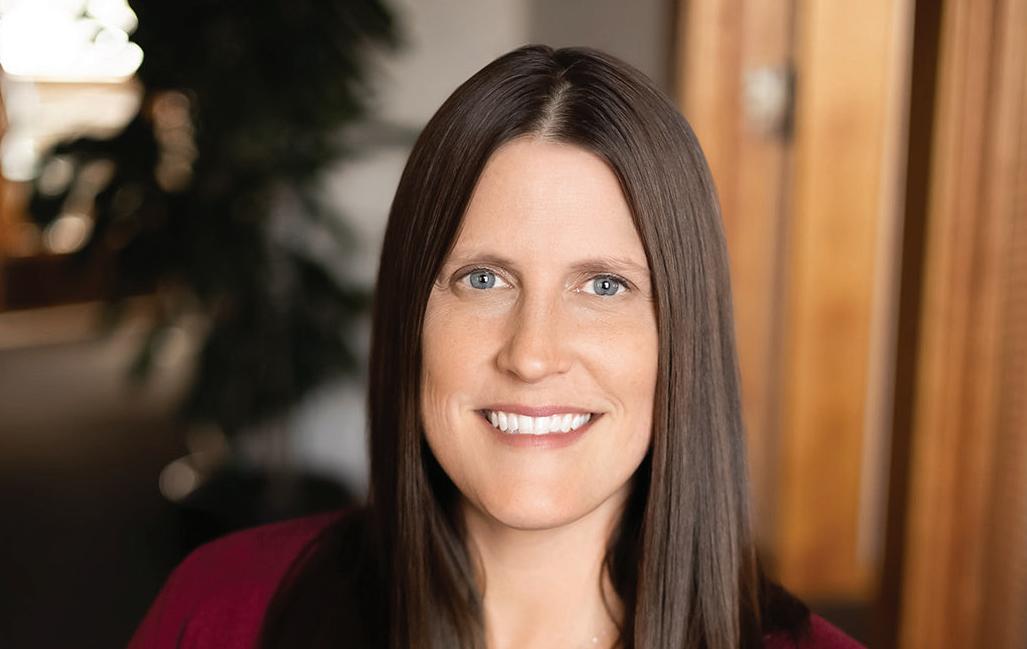



panies, or at least jobs, will be based in northern Michigan.
One of NMC’s newest programs – water quality and environmental technology – primes students for the area’s current job market. Launched in 2023, the program is about to graduate its first cohort.
Those graduates will be ready to fill roles as field technicians for environmental consulting and remediation, which is on the rise as both water conservation and sustainable building take focus.
“The job market for that is there,” Hirsch said. “There are geologists and environmental engineers who need people to be in the field doing groundwater sampling, visiting wells, and taking soil samples so that the people with PhDs and higher degrees can focus on writing reports and proposals.”
In the meantime, Hirsch is working hard to build an advisory committee made up of field experts to make sure the program’s curriculum is competitive.
“The students are going to need to have

As the blue economy evolves, some of the jobs that could become more in demand Up North include:
Environmental Engineers


the certifications and training to make them hireable, good employees right off the bat,” he said.
And, just because northern Michigan remains resistant to cruise lines and sea mining doesn’t mean it’s not capitalizing on other cleaner trends. Efforts are underway to establish Traverse City, Frankfort, Leelanau and the towns surrounding them as a center for sustainable maritime technology.
One initiative, the Fresh Coast Corridor, is planning the first freshwater e-boat charging corridor in the Midwest, set to run from Frankfort to Mackinac Island with the potential to open up hydro-focused clean energy jobs.
As for where the most immediate job opportunities are going to crop up over the next decade, Lutchko and Hirsch say those will center around sustainable solutions to problems affecting the Great Lakes — PFAS, microplastics and water-carrying lead pipes that are still integral to some of northern Michigan’s infrastructure.
What they make: About $80,000. Why they’ll be needed: They’ll help identify where PFAS pollution, microplastics and lead are in northern Michigan’s waterways and water supply — and how to get them out. Companies like Traverse City’s Otwell Mawby already employ a handful.
What they make: An average of around $45,000. Why they’ll be needed: While it’s not a top-paying position, it’s projected to be one of the most in-demand roles over the next few years – and the required education is 100% local. Biological technicians (or water-sampling techs) will be boots on the ground, making their way all over northern Michigan to collect water samples as the first step in identifying where pollutants are concentrated so that environmental engineers and scientists can get to work cleaning up.
Environmental Lawyers
What they make: Anywhere from $90,000-$110,000, based on experience.
Why they’ll be needed: Not every blue economy role involves touching water. As efforts to identify and clean pollutants ramp up, environmental lawyers will be busy tackling red tape, jumping regulatory hurdles, securing funding and filing suits against polluters. They’ll also navigate shifting laws, fight legal battles over liability and push for stronger protections.


Brendan Franklin, 34 Director of Nursing, Critical Care and Stroke, Munson Medical Center
Franklin started his career with Munson in 2015 as a staff nurse in the emergency department. He rose through the ranks to his current position, which he assumed last year.
In his role, he reports directly to Munson’s chief nursing officer, has seven managers that report to him and about 420 personnel that report to those managers. He has oversight of four clinical departments, including the stroke and intensive care units.
“I deal with everything from patient satisfaction to new equipment needs and collaborating with our physicians,” he said. “In terms of critical care and stroke services, I run daily operations for those programs to align nursing with the needs of our patients.”
After rising through the ranks, he said it’s rewarding to be able to impact more patients and advocate for more staff than he could when he was a front-line worker or managing smaller teams.
“I’ve seen the front lines, middle management and now the director level. I’ve worked at the patient’s side, and now I’m working to manage the teams that take care of our patients,” he said.
“I have a personal motto – inspire, engage, influence – and this role definitely gives me the opportunity to do so in a much wider net.”
Franklin says staffing is the biggest challenge in his world (as it is across many businesses and organizations in northern Michigan).
“Right now, it comes down to our talent pool – keeping talent in northern Michigan and attracting talent to northern Michigan,” he said. “We’re working every angle we can to make this the best place to work while committing to having the kind, compassionate, caring nursing staff that our patients expect when they come here.”
Being a younger leader isn’t always easy, Franklin says, but he feels that it’s a positive when it comes to recruiting young nurses to his workforce and relating to those who are already there.
“There is something about being young-
By Art Bukowski
Northern Michigan’s largest healthcare system has thousands of employees across dozens of facilities. While every person on the payroll plays an important role of some sort, those in leadership have the high-pressure task of ensuring that entire departments and operations run smoothly and efficiently.
Among Munson Healthcare’s management are several young people who now lead teams of hundreds of people and have significant responsibility. The TCBN connected with five of these leaders to learn more about how they got there, what they do and their hopes for the decades ahead.
er and being in a more senior leadership level seat, because you can relate to this new generation,” he said. “Obviously (it’s hard) to replace somebody that’s got 40 years of experience in a role, but certainly it’s good to have a balance.”
Looking to the future, Franklin hopes to see an even greater emphasis on improved patient experience. He says that trust in healthcare has faded a little bit in recent years, and improving patient care is the way to regain that trust.
“That could be everything from reimbursement to how care itself is provided. But patient experience has to be number one,” he said. “I’d like to see … our community here really know and trust that we’re fully dedicated to providing the services that our patients need in a timely, efficient way.”
He also wants to see more and stronger community partnerships, something that could build trust and help with staffing woes.
“We’re very fortunate to have a great connection to NMC here in town, and we should ensure that health care orga -

nizations are part of that education process and the growing of the workforce and talent,” he said. “How can we take a health system and get more engaged in some of these community programs that really benefit the health and wellness of our entire community? How can we make sure that Munson’s standing there as a partner?”




Tori Sykes, 29 Director of Nursing, Emergency Services & Operations, Munson Medical Center
Sykes’ primary responsibility is running the nursing team at Munson Medical Center’s emergency department, though she also has oversight of the central transport team and other units. In her role, she has four direct reports and more than 300 indirect reports.
Her story is similar to Franklin’s. She’s been at Munson since 2017, starting in the thick of things as an emergency department nurse. After obtaining her Master of Science in Nursing and MBA degrees, she climbed the ladder to her current position.
After being on the front lines for many years, she enjoys being able to apply her
Chelsea Szafranski, 33 System Director of Digital Health, Munson Healthcare
After several years in administrative roles at Beaumont Health (now Corewell), Szafranski arrived at Munson on the eve of the COVID-19 pandemic in February of 2020.
This timing is particularly noteworthy, as one of her key responsibilities (among many others) is oversight of telehealth and other digital health technologies.
“It was a new role when I started that was really looking at long-term strategy, and when COVID hit, it really accelerated all the work that we were going to do over a few years into just a couple of months,” she said. “I had to hit the ground running.”
Her role is arguably more important than ever as Munson and other healthcare systems are prioritizing increased access by way of telehealth and other technologies.
“A lot of our providers do video visits
knowledge to the entire department to improve operations. She also feels a great sense of responsibility to lobby her own superiors in an effort to improve working conditions and patient care in her department.
“I really enjoy problem-solving and complex processes. I understand how emergency medicine works, but now I’m getting to make decisions and help influence our senior leaders who are making those big dollar decisions and helping them understand the impact to the patient and ensure we provide the best experience,” she said. “How do we make … the work of the bedside staff much easier?”
Staffing is a challenge in her department, and so is the nature of the work. Working in an emergency department in a small town means there’s no shortage of emotionally draining situations, she says.
with patients in their homes … and our emergency medicine providers (use video) to get in contact with specialists or help with patient care,” she said. “I work really closely with a lot of our clinical teams to set up the technology and set up the processes, then make sure they have what they need to be able to do their jobs with digital health work.”
But she’s responsible for much more than just telehealth. She’s charged with discovering and implementing all forms of digital technology that increase efficiency and improve patient care. Online self-scheduling, e-check ins, e-registrations and more are her purview, as are burgeoning technologies that will continue to streamline care and workloads.
“We’re also just starting to get into exploring just new technologies and see what’s out there, and some of that is artificial intelligence,” she said. “We have a pilot right now where providers are using AI to complete their notes
“Our community is so small, and obviously there’s tragedies in every community. We see bad car accidents, bad snowmobile accidents, bad boating accidents (involving people we know),” Sykes said. “And for an emergency department staff member, that can be really impactful.”
Sykes is excited to see advances in technology that may assist with patient care in the decades ahead.
“The younger generations grew up with cell phones, and we’ve had the Internet our whole lives. How then do we become the creators of healthcare innovation to make something different?” she said. “What can we do proactively to prevent people from getting sick? And how then do we utilize our ability as a health care system to make that accessible to the patient?”
after they see a patient. The technology listens in on the visit with the patient and helps the provider with a lot of the manual work they’re doing right now.”
Szafranski says it’s rewarding to explore and implement these tools. Healthcare is just “scratching the surface” when it comes to using new technology that could have tremendous upside, she says.
“I like seeing the impact that technology can have on making our providers more effective in their jobs and letting them focus on the patient care instead of on some of the administrative tasks that they’ve sort of inherited over the past several years,” she said.
Still, it’s a careful balancing act. New solutions are coming online every month, it seems, and Szafrasnki has to figure out which make the most sense for Munson’s budget, infrastructure and staffing levels.
“There’s so much you could do with technology – there really is unlimited potential there. But we only have limited


resources and limited time to be able to support (technology),” she said. “So, it’s trying to prioritize what can we do given those limited resources. How we make sure that we’re focusing on the things that have the biggest impact is one of the main things we struggle with in digital health and just healthcare IT in general.”




Josh Thorington, 40 Director of Outpatient Rehab, Mary Free Bed at Munson Healthcare
Thorington is a physical therapist and board-certified sports clinical specialist who began his career with Munson as a physical therapist at Paul Oliver Memorial Hospital in Frankfort after graduate school.
Now, he oversees outpatient care across several facilities as part of Munson’s partnership with Grand Rapids-based Mary Free Bed. The two organizations joined forces to provide inpatient and outpatient rehab services in northern Michigan.

“I work for two fantastic organizations in Mary Free Bed and Munson Healthcare, with staff that are employed by both or either, but we’re all one big giant team,” he said.
Thorington is driven by the very essence of rehab work. No matter the injury, he and his team are constantly working to make patients better.
“The work we do is so impactful on our communities because we’re restoring people’s ability to live their lives,” he said. “Whether its an ankle sprain or a stroke, they’ve had a change in their quality of life, and we have the
privilege of helping them get their life back, reduce their pain, improve their strength and get them back to doing all the things that are meaningful to them.”
While there’s always a give and take when it comes to moving from the front lines to a position of leadership, Thorington says he feels he’s where he’s meant to be.
“I feel like as a leader, I can impact more lives than I could when I was a clinician,” he said. “I can spread my influence over more people and have more of an impact.”
Thorington is proud of his team and the work they’re doing. It’s great work,
he says, and he has the data to back it up. They use an outcome tracking tool that allows them to measure progress against more than 50 million other patients within the system, nationwide.
“(It shows things like) how long the average patient with this injury in this demographic is in therapy for, here’s how much change they typically see in therapy, things like that. So It allows us to benchmark ourselves against a large data set across the nation,” he said. “We’re in the top 15 to 20% of outcomes nationwide. The clinicians we have are so fantastic at the job they do.”
Going forward, Thorington says he wants to see shakeup within the insurance industry, particularly the way they do business.
“Year after year, we keep seeing (insurance companies) decrease the amount they’re paying for outpatient therapy. And if you talk to a lot of our front line staff, they’ll say, ‘I got into this to help people; I never knew that the insurance companies would be the real boss,’” he said. “We want to pay our staff well, we want to reinvest back in our clinics, but when the money you bring in is decreasing year after year, it’s the biggest challenge we have. It’s forced us to maximize how many patients we can care for in a day.”
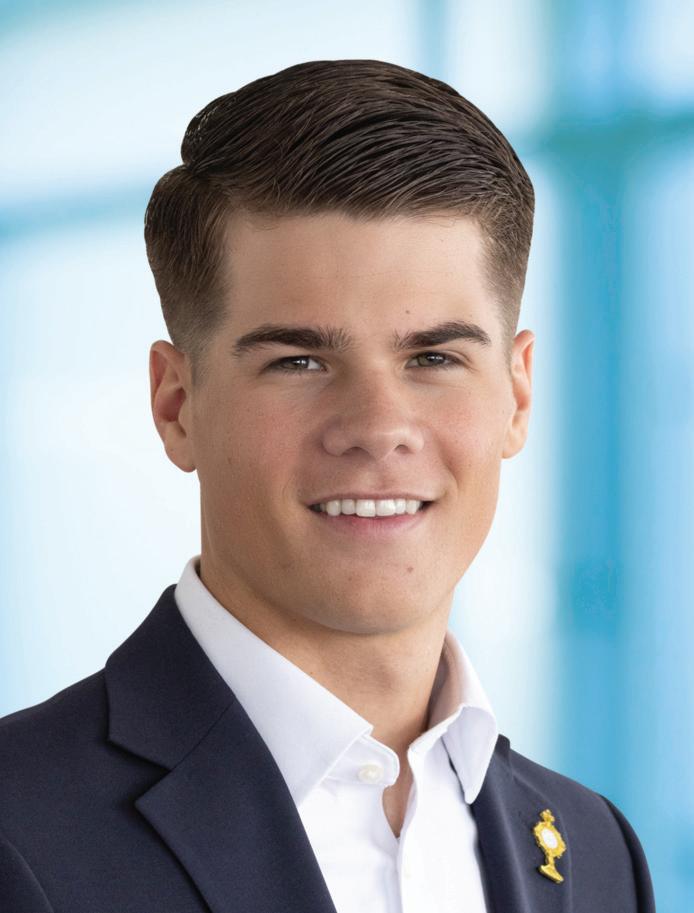




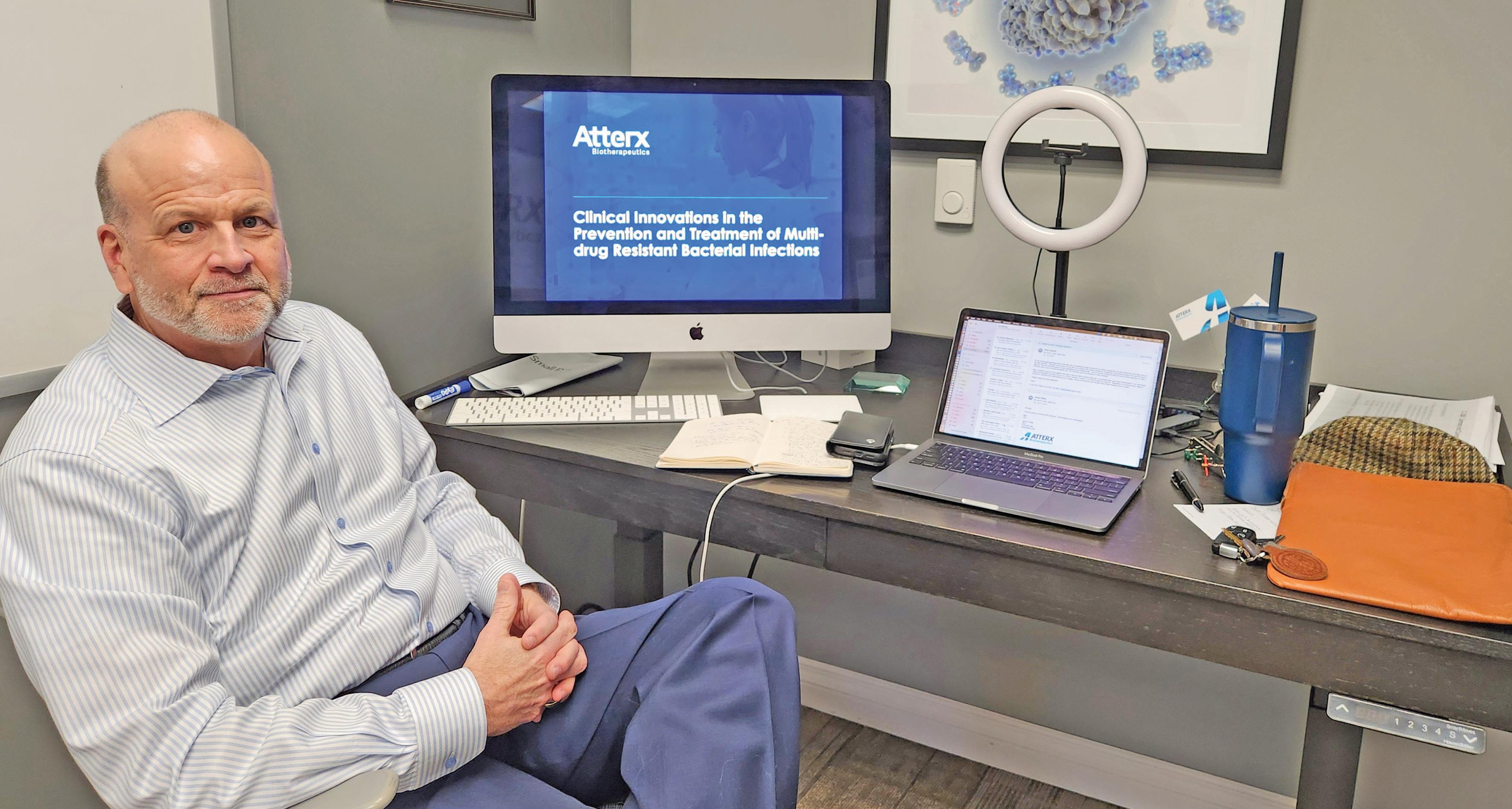
By Art Bukowski
Antibiotic resistance is a big problem in modern medicine. How big, exactly?
According to the World Health Organization (WHO), antibiotic resistance – a situation in which bacteria and other microorganisms develop resistance to drugs that once were very effective at killing them – is one of the top global public health and development threats.
Antibiotic-resistant superbugs were directly responsible for 1.3 million global deaths in 2019 and contributed to almost 5 million deaths, and that number is rising year over year. If the problem continues to worsen, experts say, society could functionally return to a time before antibiotics existed at all.
“This problem is so serious that it threatens the achievements of modern medicine,” reported the WHO. “A post-antibiotic era – in which common infections and minor injuries can kill – is a very real possibility for the 21st century.”
Enter Atterx Biotherapeutics, a Traverse City-based firm that is developing two products to fight specific types of antibiotic-resistant infections. CEO Jim Millar and his team are passionate soldiers
in the war on antibiotic resistance.
“If something’s not done about this, they’re projecting that by 2050 that there will be 10 million deaths annually due to antibiotic resistant bacterial infections, outstripping cancer,” he said.
The TCBN sat down with Millar to learn more about what’s happening and what’s next at Atterx.
from harmful bacteria, stopping the problem before it happens.
“We have a harmless E. coli that is part of our product. It is put into a gel at the bedside, and the gel is placed on the catheter, which is then placed in the bladder,” Millar said. “In the bladder, our harmless, healthy, good bacteria colonize the bladder very quickly. It forms
“We hope to get through phase one and two by middle-tolate 2026. Then the determination is do we want to move into phase three ourselves, or do we want to hand it over to a larger pharma company? There will be options.”
– Jim Millar, CEO, Atterx Biotherapeutics
Atterx’s first product, dubbed C-1205, is specifically designed to combat catheter-associated urinary tract infections (CAUTI), a very common and damaging problem in modern healthcare. It does this by introducing harmless bacteria that prevent infections
a biofilm and protects the bladder, and the pathogenic bacteria are not able to compete.”
The technology is patented and was recently approved to enter clinical trials, a huge win for Atterx.
“The big milestone this past year was that the FDA approved our IND (investigational new drug) application, so we’re able to start our clinical trials,” Millar
said. “Getting into FDA trials is difficult, and getting through the trials is difficult, but the hardest thing is actually getting your IND approved.”
Early research on C-1205 (including human testing, unusual at this phase of product development) suggests it may be extremely effective, to the tune of reducing up to 90% of CAUTIs. And that could mean huge things for the war on this specific type of infection, which depending on the data source accounts for up to a quarter of so-called hospital-acquired infections (HAI) every year.
Multiple phases of trials mean the product is still several years out from being approved for use, Millar says. Atterx is privately funding its clinical trials to expedite the process (government funding is available, but slows the process considerably). After the first two phases, it’s possible that Atterx sells the product to a larger firm with more resources to finalize it for market.
“We hope to get through phase one and two by middle-to-late 2026. Then the determination is do we want to move into phase three ourselves, or do we want to hand it over to a larger pharma company?” Millar said. “There will be options.”
Millar is fired up about getting the product in use, one way or another.
“We’re actually in the process of selecting the sites for our clinical trials, and we’re talking to these hospitals that are treating the patients and are dealing with these horrible situations tied to resistant infections,” he said. “Their excitement about this product and wanting to be part of our clinical trials gives me huge validation of my own excitement.”
Atterx’s second product, named GN4474, is in earlier stages of development and approval. It’s a topical product, used by itself or applied to a wound dressing, that Millar says is effective against all antibiotic-resistant, gram-negative bacteria. He says it works by carrying a transmissible “killer” plasmid to pathogenic bacteria.
“The way I say it in layman’s terms is every living thing needs to do two things: They need to eat and they need to reproduce,” Millar said. “What we’ve done is we’ve figured out a way to fake the pathogenic bacterial cells to think that they are reproducing.”
What the pathogenic bacteria believe is reproductive activity is actually lethal.
“The pathogenic cell accepts our killer
cell, it expresses and blows the cell up,” Millar said.
This novel process works differently than antibiotics and does not appear to be susceptible to the same mechanisms that lead to antibiotic resistance.
“More tests have to be done, but it’s showing right now that bacteria will not become resistant to the use of our product,” he said.
Early animal studies have shown tremendous promise in GN-4474, Millar says. Atterx has received proposals from both Michigan State University and the University of Wisconsin for further animal testing. Atterx is in the pre-IND phase and hopes to get the product approved for trials within the next year.
Atterx has been around for a while, but it’s functionally an entirely new company after a recent restructuring.
It was started in 2001 by two researchers at the University of Wisconsin who were focused on a variety of initiatives. The company paused in 2013 upon the death of one of its founders, but was back up and running again by 2018 when Millar, who has an extensive background in healthcare and startups, came on as a consultant.
Millar’s main goal was finding a way to
otic resistant technologies. He got on the Atterx board and then took over as CEO in 2021. One of his conditions for taking over in that position, as it turns out, was moving the company from Wisconsin to northern Michigan.
Millar and his family had been coming up to Crystal Lake for more than 30 years, and it was through the community there that he met Lowell “Jep” Gruman, managing partner of local venture capital firm Boomerang Catapult and chairman of 20Fathoms’ board. Gruman impressed Millar with his tales of tech startups in northern Michigan.
“I was just absolutely intrigued that this place with so much natural beauty is also building out this beautiful, wonderful high-tech ecosystem,” Millar said.
A big reason this local ecosystem functions is investment and support from Boomerang Catapult, Northern Michigan Angels, Optimal Capital, Michigan Angel Fund, Michigan Capital Network, Michigan Rise, all of which have subsequently invested in Atterx.
“I went to my board and said, ‘If I’m able to raise the remainder of the amount of our current raise from Michigan-based investors, I want to move the company headquarters to Traverse City,’” he said. “And they said, ‘If you can do that, you can move it.’”
Atterx is a virtual company. For now, Millar has his office in the 20Fathoms

coworking space in the Bayview Professional Center, with two other full-time employees – both Ph.D. microbiologists – working out of state. Millar handles the business and regulatory side of things while the docs are tasked with research and development.
Millar said there’s a push to develop local lab space that could be shared by Atterx and other local biotech startups, something that would allow his firm to add more local employees.
For now, those surrounding and supporting the company are thrilled to see it making big strides in its mission.
“Atterx is a fine example of the innovation happening in Traverse City that 20Fathoms was designed to help cultivate, and it has been exciting to have a front row seat to their progress here at our coworking space,” 20Fathoms Executive Director Craig Wesley said.
Dr. Joe Santangelo is chief medical, quality and safety officer at Munson Healthcare. Though he does not have direct knowledge of Atterx initiatives, he says it’s important that medical professionals are working on this problem to prevent further illness due to resistant bacteria and is glad to see work being done here.
“It’s great to see Traverse City become a place where we can use science to help solve the medical problems of today and tomorrow,” he said.




By Craig Manning
Traverse City’s Aliyah Nowlin is only 22 years old, but she’s already within reach of earning her master’s degree in nursing. And while Nowlin isn’t sure yet if she’ll stay in northern Michigan for her entire career, she’s already enshrined in local history as the first student ever to earn a bachelor’s of science in nursing (BSN) from Northwestern Michigan College (NMC).
Last August, NMC and its program partner, Davenport University, held a ceremony for the first dozen graduates of its new “fast-track” BSN offering. While that celebration honored the program’s first 12 graduates, the heavily online nature of the track meant that each pupil completed the curriculum at a slightly different pace. Nowlin was the first to finish the program; as she tells it, she just happened to be in the right place at the right time.
at
For years, a nursing student in northern Michigan could only earn an associate’s degree through NMC. In fact, up until 2012, community colleges in Michigan weren’t even permitted to award

How NMC’s long-in-the-works BSN degree changed the lives of its inaugural graduates
of bachelor’s programs, including culinary arts, energy production, concrete technology and maritime technology. In January 2014, NMC became the first community college in state history to award a bachelor’s degree, graduating a pair of students from its maritime technology program.
Growth of NMC’s existing bachelor’s
“Because I’ve been at Munson as a bedside nurse for two years, and as an aide for two years before that, I’ve got a really good relationship with a lot of the providers here, and I know that if I start at Munson as a provider, none of them will let me fail.”
– Aliyah Nowlin, Student, Davenport University’s MSN Family Nurse Practitioner Program
bachelor’s degrees of any kind. Legislation passed that year opened the door for community colleges to offer a small number
programs, combined with a nursing shortage in northern Michigan, led the college to start lobbying legislators for a law change
that would add BSNs to the list of bachelor’s degrees open to community colleges. In both 2020 and 2022, TCBN sister publication The Ticker reported on pending bills that would have done just that.
In both cases, legislators against the effort introduced their own “poison pill” legislation: bills that would have penalized community colleges for adding any new “baccalaureate or bachelor’s degrees” by prohibiting them from collecting property taxes. Those counter-moves left schools like NMC between a rock and a hard place, and significantly delayed the greenlight for BSN degrees at community colleges.
“For a community college like NMC, about a third of our revenue comes from what we collect through property taxes,” Rachel Johnson, then NMC’s board president, told The Ticker at the time. “So, what would happen if these bills would pass is that it would be like bombing
NMC’s finances to offer a new baccalaureate degree. We’d immediately have to give up a third of our revenue.”
As Johnson explained, the idea of bringing bachelor’s degree programming to community colleges historically has been viewed by some of Michigan’s fouryear institutions as community colleges “creeping” into their territory, hence the fierce debate – and aggressive political maneuvering – around the BSN bills.
Eventually, there was a compromise: In July 2022, lawmakers and the governor approved a state budget for the 2023 fiscal year that included a $56 million appropriation to support the development of programs for nurses with associate degrees to complete their (BSN) on community college campuses.
While the appropriation didn’t fully open the door for community colleges to offer their own BSN programs, it did enable those schools to partner with four-year colleges or universities to devise so-called “BSN completion programs.” Nurses with associate’s degrees could then use those completion tracks to earn BSN degrees on community college campuses.
In February 2023, NMC announced the selection of Davenport for a “firstof-its-kind” BSN program, citing Daven-
port’s willingness to offer on-the-ground program support locally in Traverse City. Through the partnership, students earn their associate’s in two years at NMC, then complete their BSN with a third year of study. Year three is also delivered on NMC’s campus – as well as through online study – but pupils at that point are technically Davenport-enrolled students rather than NMC students.
When the partnership was announced, NMC and Davenport touted it as a way to give nursing students “a faster, less expensive path to a BSN” than what had previously existed in northern Michigan. In particular, NMC emphasized how local nursing students would no longer have to travel downstate to complete their bachelor’s degrees.
The new BSN pathway officially kicked off at NMC in May 2023.
For Nowlin, who had finished up her associate’s degree in nursing just a few days before the new program came online, the timing couldn’t have been better.
“During the last semester of my associate’s degree, I heard that NMC was adding a bachelor’s program,” Nowlin said. “And being so young, I knew that I would eventually want more than an associate’s degree. I’m 22 years old; I have

a lifetime of nursing ahead of me, and I never want not having a four-year degree to stand between me and whatever job opportunity that arrives on my doorstep. So, I chatted with the program advisor from Davenport, and I decided, ‘Yep, I think this is something I want to go through with.’”
Beyond good timing, Nowlin’s accelerated path through NMC’s nursing programs has a lot to do with her commitment, early in life, to pursue a career in healthcare.
“I always knew I wanted to help people, and I was thinking of becoming a doctor,” Nowlin explained. “But when I was 16, I got my tonsils out, and I realized that I didn’t really talk to the doctor. I

was 16, I was terrified, and I was talking to the nurse who was putting my IV in. He was the one who put me at ease. We got to talking, and he asked me, ‘Have you thought about nursing school?’ And I hadn’t, at all. But I realized from that experience that I wanted to be able to talk to people, and be personable, and provide care that matters. And so I did some research after that, and I decided that was the path I wanted to go down.”
Nowlin ended up dual-enrolling at NMC during her high school years, checking nursing program prerequisites off her to-do list and even going to work at Munson Medical Center as a nursing assistant. After graduation, she enrolled in the college’s associate’s program.
At Munson, we know what commitment means. And we’ve been living it for over 100 years. It’s caring for you through your entire journey. With soft words and a soothing touch. With dignity and respect. Relieving your pain, easing your discomfort, and restoring hope.
Where Nowlin’s journey in nursing began at a young age, Katrina Perry, another graduate from NMC’s inaugural BSN class, has followed a very different path. Now 44, Perry started working at Munson Medical Center in 2016 as a housekeeper in the maternity ward. The job paid $11 an hour. The job, she says, opened her eyes and made her feel like there was more for her to offer than cleaning and tidying.
“I was always finding myself doing something I probably shouldn’t have been doing, because I wasn’t licensed,” Perry said. “It would be something as simple as putting a pair of socks on a patient to make them more comfortable, but we weren’t even supposed to do that.”
Just like Nowlin, though, Perry had caught the passion for helping people. Soon, she was promoted to unit clerk at Munson’s NICU, working night shifts and helping new parents navigate potentially traumatic situations.
“It just felt good,” she said of the job. “It felt rewarding.”
But it was the next promotion, to nursing assistant in the stroke unit, that changed Perry’s life.
“I went home after my first day and I told my husband, ‘I’m going to sign up for the nursing program at NMC,’” she said.
Fast-forward to 2025 and Perry is a registered nurse on the cardiothoracic surgery floor of the same hospital where she started as a housekeeper nine years
ago. She’s also earning more than three times the salary she was back then. Without NMC’s BSN track – and the fact that it could all be completed without travel obligations – Perry isn’t sure whether she would have ever moved beyond an associate’s degree.
“I probably wouldn’t have gone through with (getting my BSN), just because we have a busy life,” Perry said,
to pursue her chosen path without leaving Traverse City. When the NMC-Davenport program came online, she jumped at that opportunity to stay local.
“I graduated on May 6, 2023 with my associate’s degree, and on May 10, I started the bachelor’s program,” Nowlin said. “Through the NMC-Davenport partnership, tuition was discounted, so that was definitely a big motivating factor, too. I
“I was so relieved when NMC added the BSN, because it meant I didn’t have to go anywhere else. It was all just right here.”
– Katrina Perry, RN, Munson Medical Center
referring to the “blended family” of seven kids that she and her husband, Derrick, share together. “The BSN program is a heavy workload. Work sometimes needs to be missed, so you’re not making a whole lot of money, and travel would just have made it so much harder. I was so relieved when NMC added the BSN, because it meant I didn’t have to go anywhere else. It was all just right here.”
Nowlin appreciated the “all right here” aspect of the program, too, but for different reasons. A self-described “homebody,” Nowlin says she knew she wanted




think I saved between $3,000 and $5,000, compared to what I would have spent on a BSN elsewhere.”
Nowlin now is on track to graduate from Davenport’s MSN family nurse practitioner program in April 2026. And while that program did have some downstate components – “I just got back from a oneday intensive in Grand Rapids,” Nowlin said when the TCBN sat down with her –the vast majority of the curriculum can be completed locally.
Not surprisingly, Nowlin expects she’ll stick around with the local healthcare
system once she has her MSN.
“Because I’ve been at Munson as a bedside nurse for two years, and as an aide for two years before that, I’ve got a really good relationship with a lot of the providers here, and I know that if I start at Munson as a provider, none of them will let me fail,” Nowlin said. “I feel like, by staying at Munson, I’ll not only be able to hone in on my skills, but I’ll be around a group of people that I know will support me. So, I do think that I’ll stay in Traverse City and at Munson for a couple years. Whether or not I stay there forever, I don’t know; I think at some point, I’ll end up going outpatient. But for now, it’s definitely where I’ll be for the foreseeable future.”
Perry also sees herself staying at Munson, but moving more toward a leadership role.
“When I did my leadership portion (of BSN clinical trials), I did it with the manager on the cardiothoracic surgery unit,” Perry said. “I really watched how she handled things, and how the employees responded to her, from the nurses to the nurse assistants to the cardiologists. Seeing how she was able to manage her employees really effectively, but also get along with them and have them respect her, was really eye-opening, and modeled the kind of leadership that I aspire to. So, I’m still learning, but I’m going to pursue that kind of leadership, and I probably wouldn’t have done that before my BSN. “I would have been too scared.”



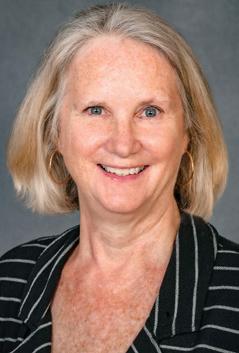


One of the easiest, yet often overlooked, components of an estate planning strategy is designating beneficiaries. Those whose estate plan includes a will or trust may wonder why this step is important. Transfer of some assets — such as life insurance policies, annuities, IRAs, retirement plans, and other employee benefit plans — can be based on beneficiary designations in place at your death. As your objectives for transfer may change over time, it is important to review those designations in context of your overall plan for asset transfer.
Transitioning your family business to your heirs may sound simple enough, but in fact, doing it successfully can prove difficult. To help improve your transition’s chances for success, consider family business governance.
This is a system of correlated tools and actions to support the next generation with controlling, owning, and operating the business. It also puts in place a framework that contains business protocols, describes how future ownership changes occur, and establishes a precedent for making business decisions.
Confirm your designations align with your estate plan
Inventory your assets and determine which can have designated beneficiaries.
Frequently used tools
There are several tools that can be employed as part of a family business governance system, including:
Review the designations in place to make sure your preferred beneficiaries are listed for each asset. Consider choosing a successor in case your designated beneficiary does not survive you.
A buy-sell agreement is a legally binding contract that stipulates how an owner’s share of a business may be reassigned if triggering events occur, the price that will be paid, and the payment structure.

If changes are needed, be sure to complete each form as indicated. Requirements may vary from one financial institution to another or from one state to another. For example, the custodian of a retirement plan may require a spouse’s signature but a life insurance carrier may not. Similarly, some institutions may require a notarized original while others may allow you to complete the designation online.
As you acquire new assets, make sure to consider establishing beneficiary designations in alignment with your estate plan.
A family employment policy document can be kept within the family for private use or incorporated into the business’s human resource documentation. It sets expectations for heirs, spouses, and extended family members about such issues as how they can obtain employment in the business, the requirements to attain key positions, the compensation standards to be used, and incentive language for family members.
Identify any unintended implications to your overall estate plan
While creating designations may be a clear-cut process, identifying potential tax implications for your beneficiaries may not be so easy. Your tax and legal advisors can help you review your beneficiary designations to identify any unintended impacts to your beneficiaries.
A distribution or dividend policy is key in setting expectations with family members regarding what distributions they should expect to receive from the business. Business owners must balance the need for cash to maintain or grow the business with the desire to receive distributions.
A professional board of directors is a governing body that helps oversee the business and makes major decisions. A board generally comprises three, five, or seven professionals from various industries that have the subject matter expertise to assist the company strategically.
A family board or council is a group within the family — or may include the entire family — that comes together to make decisions about the business on the family’s behalf.
Remember that your beneficiary designation forms are one piece in the larger estate-plan puzzle you have put together. It is important to consider how those designations — which operate outside your will or trust — may impact your overall strategy. For example, if your objective is to evenly divide all of your assets among your decedents, a designation could change that balance. Your tax advisor can also help you weigh options for transferring taxable assets. If charitably inclined, you may consider naming a tax-exempt organization as a beneficiary of a taxable asset, such as a qualified retirement plan or nonqualified stock options.
A company mission statement can be valuable to your employees and your family as it addresses the business’s purpose and vision and can help guide future company leaders.
Revisit your designations
Your estate plan can address ownership, control, distributions, and several other factors.
The business’s governing documents should be reviewed at the same time the family business governance system and tools are put in place. Revisions to these documents or corporate resolutions stored in the corporate minutes may be needed to align these documents with the company’s governance system.
As with all documents in your estate plan, it’s a good idea to review your beneficiary designations regularly. Not updating your forms to reflect life events such as a birth, death, marriage, or divorce may mean that your wishes would not be reflected when your assets ultimately transfer. Changes in the law may also create a need to revisit your beneficiary designations. Your tax advisor can help you understand how the latest changes may impact your objectives for transfer.
Helping ensure a successful transition
Key takeaways

Transitioning the family business to the next generation is much more than transitioning shares. A well-thought-out and documented plan that addresses ownership, control, and operations helps build a strong governance system for your business. This system, combined with communication with the next generation, can be key to helping ensure your transition’s success.

Make sure you take the time to thoughtfully fill out beneficiary designations for eligible assets. Also, consider regularly discussing your plans with your tax and legal advisors and wealth planning specialists. Your advisors can help you avoid expensive mistakes and suggest opportunities to better reflect your ultimate wishes for your estate.
Our firm is not a legal or tax advisor.
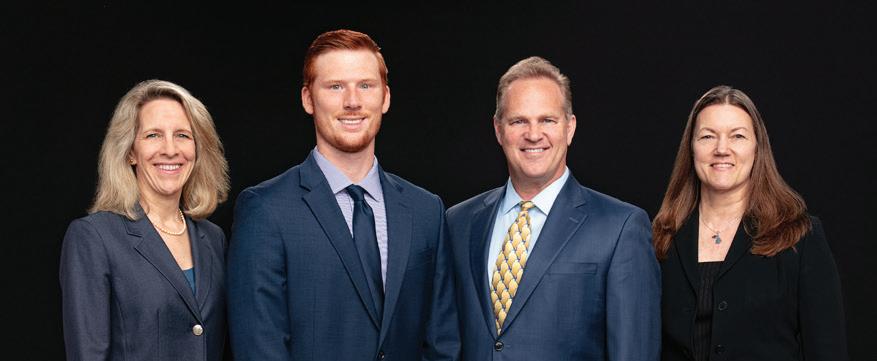
JULIAN | BLACK Wealth Management Group of Wells Fargo Advisors







By Craig Manning
A brand-new ARPA-funded mental health facility. An ambitious hospital expansion in Gaylord. A $5.2 million injection of cash for the Cowell Family Cancer Center in Traverse City. Two new ambulatory surgery centers currently under construction in outlying areas. A massive $30 million software overhaul. These are a few of the elements of what is already shaping up to be a big – and expensive – year for Munson Healthcare. But how will these projects and others underway at Munson actually impact the lives of local patients and their families? And what kinds of growing pains or adjustment hurdles might come from the healthcare system’s ongoing effort to transform itself into a more effective regional enterprise?
The TCBN sat down with Munson Healthcare’s President and CEO Ed Ness and COO Laura Glenn to get the answers.
In January, Munson Healthcare and Northern Lakes Community Mental Health partnered to open Grand Traverse Mental Health Crisis and Access Center. The facility – which local mental health experts say is a much-needed addition to northern Michigan’s healthcare ecosystem – was funded in part by a $5 million allocation of American Rescue Plan Act (ARPA) from Grand Traverse County. Eventually, the new center will offer 24/7 behavioral health services, a psychiatric urgent care, and adult and pediatric crisis residential units. For now, the facility is still in the process of finding its footing – and its patients.
“We are in phase one of the services offered at that facility,” Glenn explained. “Right now, we’re open Sunday through Thursday, 8am to 8pm, and we’re offering a number of services, like behavioral health assessments, crisis intervention, peer support services, and outpatient therapy. We saw about 50 patients over the first month.”
The plan is for all those metrics – days, hours, services rendered and patients treated – to increase rather dramatically over the course of the year. By the end of 2025, Glenn says, the center should be open around the clock. The psychiatric urgent care component of the center is set to open in July, while the crisis residential units for both children and adults are slated to come online in the fall.
When asked whether 50 patients is a lower-than-expected tally for the first month of the highly discussed mental health center, Glenn pushes back, saying the project is “right in line with where we thought we would be for this phase.”
“The volumes have grown slightly week over week, and as the community becomes more familiar with the resource, we’re confident that the volumes are going to continue to grow,” Glenn said. “This is a new service, so in some respects, it was hard
to project what the volumes would be. But we really do think that, as we go to 24/7 and open the psychiatric urgent care, volumes are going to spike significantly.”
Another piece of the puzzle: creating partnerships with community players – from primary care physicians to law enforcement to Munson’s own emergency department – to get patients referred to the center and “connected with the right resources for their care.”
Glenn claims Munson has already seen “some good success stories” with each of those channels.
“We’re definitely tracking where patients are coming from,” Glenn said, noting that referral sources – along with patient disposition and discharge paths – will be key metrics for the center going forward. “We want to keep an eye on how many patients are brought in by law enforcement, as a kind of jail diversion approach – versus, say, an emergency department diversion.”
Also in January, contractors worked around the clock at Munson Healthcare facilities to implement a new electronic health record software system.
“We call it ‘one patient record,’ because the goal is to have a single medical record among all the hospitals throughout our region,” Ness explained of the software
oix, Manistee, Frankfort or Traverse City, as a patient, your data will be in one record that’s accessible to all clinicians. If you transfer between facilities, your medical information will flow with you.”
Ness says the benefits of one patient record are obvious: less paperwork, fewer menial tasks for Munson employees, and a more intuitive, seamless, coordinated patient journey through the Munson system. The benefits are so obvious, in fact, that it hasn’t been uncommon for Munson patients to question why the healthcare system didn’t already have all its hospitals and provider practices on the same digital page.
“It’s a big, complex system,” Ness said, when asked why it took Munson until now to implement something like this. “And if you think about our history as a system, we’ve come together, really not that long ago, from a set of independent hospitals and independent physician practices into a system. Each of those places had their own medical record system. So, getting everyone on to the same system, that isn’t just a software issue; it’s an equipment and hardware issue, and it’s a logistical issue.”
The complexity of consolidating Munson into a single patient record system has come with a cost – both in terms of time and money. On the time side, Ness says Munson has been working on the one patient record project “for several years,” with teams of Munson employees – in-

The complexity of consolidating Munson into a single-patient record system has come with a cost – both in terms of time and money.
entists and IT – “meeting at least weekly” to plan the transition.
On the cost side, Ness estimates that Munson Healthcare has invested around $50 million in “all the aspects of bringing this project live.”
Despite all the planning and expenditure, the one patient record pivot didn’t come without some hiccups. Munson Healthcare’s Chief Marketing and Communications Officer Megan Brown says issues during the changeover week included appointment scheduling delays, re-registrations, temporary physical/paper lab orders and more.
Glenn expects there could still be some
using one patient record, but she’s hopeful the biggest hurdles are now past.
“We’re only a few weeks into this, so we would expect to still be working through and really addressing some remaining issues for a little while longer,” Glenn said. “None of this is unexpected. But those issues that were more visible to our patients – the lab order issues and the scheduling issues, for instance – I think we’ve largely been able to work through those issues so that we’re providing a more seamless patient experience.”
In fall 2023, Munson launched the

year blueprint designed to maximize resources and increase outpatient services across its 11,000 square-mile northern Michigan service area. Those priorities have motivated a variety of construction projects across the Munson Healthcare footprint, ranging from an expansion of Otsego Memorial Hospital in Gaylord to the addition of brand-new community health center in Petoskey.
Otsego Memorial
Munson will spend $33.6 million over the course of two years to grow its Gaylord hospital.
“We’re really focused, there, on enhancing our inpatient capabilities and evolving Otsego Memorial into our regional hospital in the east, so we can expand services in that community and for the entire east region,” Glenn explained.
Specific expansions include doubling the size of the intensive care unit, adding more private beds to the facility, and making some significant updates to the birthing center at that facility to be more of a destination for expecting moms to deliver their babies at Otsego, Glenn says.
Munson has previously shared a plan to consolidate all east region births to Gaylord (Grayling Hospital also currently delivers babies) and to increase other women’s outpatient services in Grayling, too. When that consolidation occurs,
some staff from Grayling will move over to Otsego Memorial.
Per Glenn, construction is well underway on the Otsego expansion, but will proceed slowly because Munson is maintaining services for that community while construction is in progress.
“Right now, we’re looking at completing construction at the end of 2026, with an opening shortly thereafter,” she said.
Once open, the expanded Otsego Memorial will be able to handle more bandwidth as a hospital, something Glenn says will create secondary benefits for healthcare workers and patients in Traverse City.
“Through our Regional Care Transformation Plan, we have identified Cadillac in our south region and Otsego in our east region to be our regional hospitals,”
Glenn said. “The goal is that those two hospitals are able to keep sicker patients, so we can reduce some burden on Munson Medical Center and ensure that we keep capacity in Traverse City for those patients who need highly specialized care.”
In other medical news for Cadillac and Gaylord, the TCBN broke the scoop last year that Munson was preparing to build a pair of ambulatory surgery centers (ASCs) in those locales.
“The goal is that we can develop

“(W)hether you’re in Charlevoix, Manistee, Frankfort or Traverse City, as a patient, your data will be in one record that’s accessible to all clinicians. If you transfer between facilities, your medical information will flow with you.”
– Ed Ness, President and CEO, Munson Healthcare
high-quality, lower-cost options for outpatient surgery within the communities where we have our regional hospitals, very similar to Copper Ridge Surgery Center in Traverse City,” Glenn explained. “Both of those projects, we’ve got construction well underway, and we are targeting opening both facilities sometime this fall.”
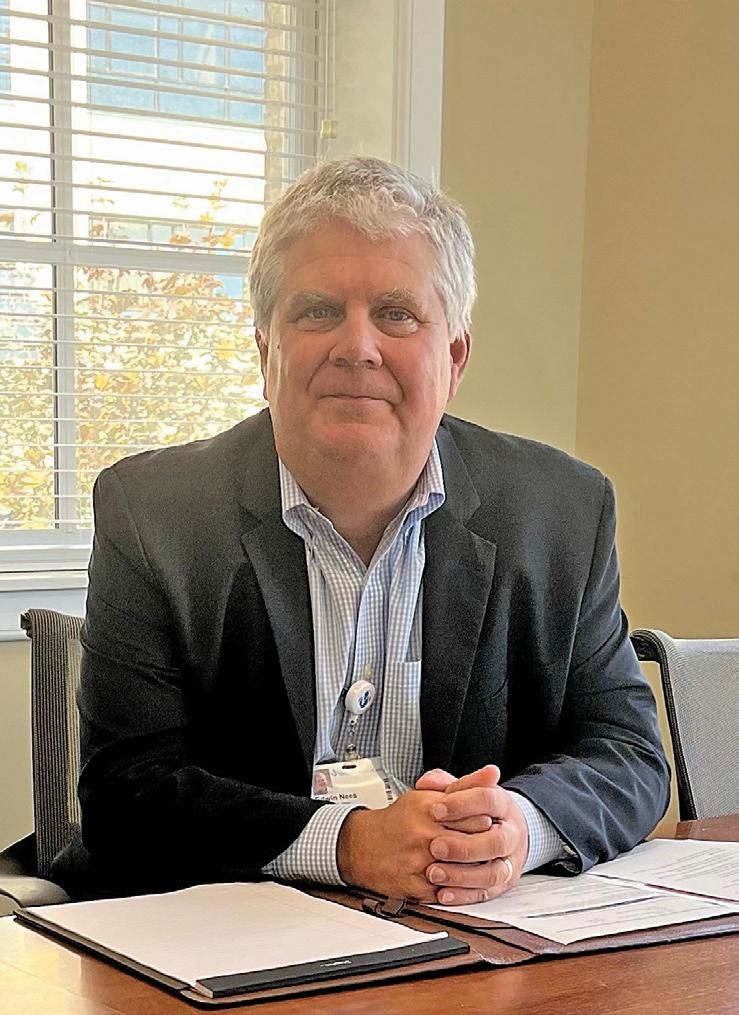
Glenn says any kind of outpatient-type surgery should be accessible via the ASCs, including colonoscopies, outpatient orthopedic surgery, outpatient urology procedures, ophthalmology or eye procedures, and more.
Similar to Traverse City and Copper Ridge, Glenn says the ASCs will be developed as joint ventures with our local surgeons in those communities. In Traverse City, many surgeons perform procedures at both Munson Medical Center and Copper Ridge, with the joint venture partnership structure rendering those same local surgeons part owners of the facility.
“We are going to model the ASCs after Copper Ridge, so our surgeons in those communities are part owners,” Glenn


said. “As there are earnings in the surgery center, we share in those earnings with our surgeon partners.”
Another Traverse City offering that Munson is seeking to replicate in another northern Michigan community is the Foster Family Community Health Center.
Billed as a comprehensive outpatient care facility, the Foster Family center offers a walk-in urgent care clinic, a laboratory for blood work, a pharmacy, X-ray and imaging services, physical therapy and more. Soon, Petoskey will have its own version of that facility.
“We purchased a property in Petoskey on Anderson Road, and we are in the process right now of renovating that facility,” Glenn said, adding that a fall opening of the new center is likely. “The facility, when it’s open, is going to have primary care, urgent care, a lab, full radiology services, and specialty care services like cardiology, urology, and orthopedics. It’s going to be a very comprehensive outpatient facility, with a goal of truly improving access to those services in that community.”
In November, Munson announced that it had received a “generous” $5.2 million

philanthropic gift from the estate of longtime Traverse City resident, Patricia Heffron to support its Cowell Family Cancer Center in Traverse City.
Perhaps the biggest earmark for that money was the purchase of a new ION robotic system, which allows for fast and minimally invasive lung biopsies. Other priorities include funding cancer research and creating a patient support program to help cancer patients and their families pay for essential expenses like housing, groceries, utilities and travel for care.
“This generous gift is helping us make sure we stay state-of-the-art in our cancer services,” Ness said.

While Munson has been vocal in trumpeting its recent leaps forward in stroke care, Ness acknowledges that cancer treatments have gotten less of a spotlight – at least in PR materials and local media coverage. But according to Brian Lawson, regional marketing and communications manager for Munson Healthcare, similar advancements have been happening at Cowell Family Cancer Center.
One example is theranostics therapy, which Lawson says uses a single radioactive drug to both identify a tumor and then, using a PET scanner, deliver radiation directly to it, allowing for precise treatment of cancer while minimizing
damage to healthy tissue. (The procedure combines elements of therapy and diagnostics, hence the term theranostics.)
Another example of newer care services at Cowell is bispecific T-cell engager therapy, a type of immunotherapy that, per Lawson, uses specially designed antibodies to link a patient’s own T-cells – or immune cells – directly to cancer cells. That targeted approach to activate the body’s immune system against cancer, Lawson notes, has typically been a type of cancer treatment that patients had to travel outside of northern Michigan to access.
“Now, they are able to receive it much closer to home,” Lawson said.




By Art Bukowski
Stephen Ezell is trying to start a revolution.
Massively reduced plastic consumption is possible, he says, as is making effective cleaning products without using harmful chemicals. But perhaps most important (if this revolution is to succeed) is that doing both of these things can also be profitable.
Ezell’s business is Truly Free, which has a goal of $100 million in sales this year. That’s not a typo. And it’s attainable, seeing as the Acme-based business (it operates out of the old Tom’s building) has more than 400,000 customers – including more than 100,000 regular monthly subscribers – that have fallen in love with the company’s products.
Having a successful business is quite nice, of course, but it’s clear that Ezell is driven by more than dollars. By saving many tons of plastic from landfill and moving away from harsh chemicals, his refill-based cleaning products system stands to upend the industry.
“We want people to vote wisely with their dollars,” Ezell said. “Honestly, I hope that a bunch of startups come and start copying us. The only way that we can create large-scale change is by altering consumer behavior.”
Sitting in his Acme office, surrounded by whitetail deer mounts and other hunting and fishing paraphernalia, Ezell doesn’t quite match the image one might expect given his company’s mission. But that just supports another of his points: What Truly Free is doing should appeal to everyone. Right or left, young or old, rich or not – we should all want to improve the health of ourselves and the planet.
“I’m not a granola-munching Subaru driver. I eat meat, I drive a pickup truck,” he said. “But I believe we need to leave the world a better place.”
It started with a bath
Truly Free’s origin story has been welltold. Several years back, as Ezell prepared to give his firstborn son a bath, he took off the boy’s clothes and was shocked to see a bad rash covering his body.
“It looked like I had dunked him in a pot of boiling water,” he said. “It was just terrible.”
Ezell and his wife, a neonatal intensive care nurse, understandably “freaked out” and sought medical care. But it was a call from a relative that changed everything.
“My aunt, who’s a very naturally minded person, calls and said ‘I heard about what’s going on with the baby, what’s happening?’ When I told her, she asked what we were using for laundry detergent,” he said. “I was like ‘I have a major problem here, why are you asking me about laundry?’ I thought she’d have a medicine, a supplement – some sort of solution.”
As it turns out, Ezell’s aunt was on to something. Before trying steroids or other drugs, she insisted, try using natural products for laundry. Ezell did, and the boy’s skin cleared up immediately. It was his light bulb moment regarding cleaning products.
“If laundry detergent can make my kids sick, what else is in the laundry room?” he said. “What’s under the kitchen sink? I basically became a full-blown eco-conspiracy theorist.”
He eventually met a woman at the Traverse City farmer’s market who was selling natural cleaning products, and went into business with her. He bought her business in 2012, forming the foundations of what would evolve into Truly Free after multiple failed products and bumps in the road.
Eventually, he hit on a system in which customers repeatedly refilled a single container with cleaning products, a business dubbed My Green Fills.
“The message was refill, not landfill,” he said. “And by the way, we’re eco-safe and hypoallergenic.”
In 2019, My Green Fills became Truly Free, a brand that better encompasses the company’s products and philosophy.
“Truly Free is really what we represent,” he said. “You can live a non-toxic, safe life. You don’t need to contribute to plastic floating in the oceans.”
Truly Free employs about 130 people, most working out of the old Tom’s building, which is used entirely for Truly Free operations. There is a small retail outlet, but the bulk of the building is used for packaging and shipping. Ingredients are sourced from around the country, but almost all final products that head to the company’s many thousands of customers come from that building.
The company has more than $100 million in total sales since its inception, Ezell says, with very strong recent growth as word continues to spread.
Part of this is because customers have found that Truly Free’s products actually work. People don’t have to choose between their values and effectiveness, a somewhat common problem with socalled “green” solutions.
“From an eco perspective, we’ve always been on the cutting edge of green chemistry. We’re still on the cutting edge and still pushing the envelope of innovation, looking at how we make our products work as good or better than the mainstream goo while maintaining a great eco-toxicological profile,” Ezell said.
The same goes for price. While Truly Free products are rarely the cheapest option, the company makes efforts to keep prices competitive across the board.
“When it comes to green products or organic foods, most people expecting to pay double for something that might not even be the same quality. So we set off many years ago to break that paradigm, and we’re still doing that.” Ezell said. “You don’t have to choose.”
Repeat customer data also supports the quality of Truly Free products, Ezell said.
“I think any monkey could sell a customer once. It’s not easy to sell them two, three, four, five, 10 times, and we do that,” he said. “When most people join and switch to Truly Free, they don’t go
Wesley and Amlotte

“What Truly Free represents is that it’s possible for startups and for entrepreneurs to generate a great business and create jobs, but not at the expense of people’s safety or the environment. I think we can be socially responsible and help people live a healthier life and leave the world a better place while generating a profit.” - Stephen Ezell, CEO, Truly Free
back to the toxic blue goo at the supermarket.”
Ezell is aware that he’s tapped in to the “zeitgeist” of green/organic/natural products.
“There are more companies entering into the healthy living category than ever before at incredible velocity. Why?




Atlanta - ATL
Boston - BOS
Charlotte - CLT
Chicago - ORD
Dallas/Fort Worth - DFW
Denver - DEN
Detroit - DTW
Fort Lauderdale - FLL
Houston - IAH
Minneapolis - MSP
Newark - EWR
New Haven - HVN
New York - LaGuardia - LGA
Orlando/Sanford - SFB
Philadelphia - PHL
Phoenix/Mesa - AZA
Punta Gorda - PGD
Tampa/St. Pete - PIE
Washington DC - Dulles - IAD
Washington DC - Reagan - DCA
Cherry Capital Airport
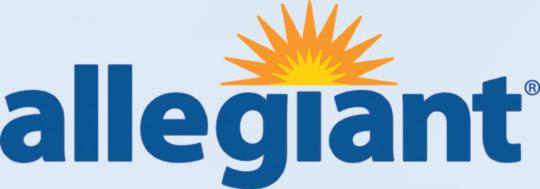
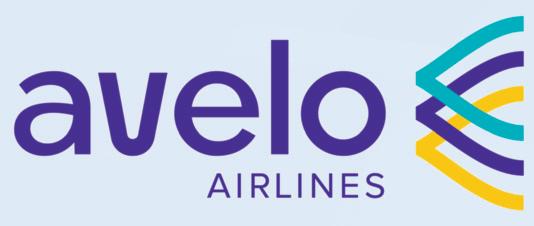





“We have saved ... a little over 14 million pieces of plastic from ever being produced. We’re talking about many metric tons of plastic that would either be in landfills or ocean bound. And we’re talking about tens of millions of gallons of chemicals that would have been washed down the sewer in the production of this plastic, and also the products themselves.”
- Stephen Ezell, CEO, Truly Free
Because they’ve been betrayed by mainstream consumerism,” he said. “And I think most people are just kind of fed up with that crap and they want a safer alternative for themselves and their kids.”
The company consistently receives feedback that its environmental stewardship is just as important to its customers as the personal health impact of its products.
“We have saved, that we can legitimately back up, a little over 14 million pieces of plastic from ever being produced. We’re talking about many metric tons of plastic that would either be in landfills or ocean bound,” Ezell said. “And we’re talking about tens of millions of gallons of chemicals that would have been washed down the sewer in the production of this plastic, and also the products themselves.”
Truly Free opened up a fulfillment center in California last year, with more possible. The company is looking at locations in Arizona, Pennsylvania and elsewhere.
“We’re at a point of volume where it really starts to make sense for us to start decentralizing out of Michigan because
it’s way more economical to ship from Vegas to San Diego than it is from Traverse City to San Diego,” Ezell said.
Ezell hopes that as his business grows, it forces further change within the industry. It’s already starting to happen within the overlapping circles of his green/natural universe.
“Ten years ago, if you went to Oryana or Edson Farms and got organic spinach, it was like five times the cost of going to Meijer and getting that chemical pesticide-ridden, genetically modified distant cousin. But now it’s cheap, and it’s not because a bunch of farmers became philanthropists,” he said. “It’s because enough consumers voted with their dollars and said ‘This is what we want.’ So then big ag said ‘Okay, how do we scale?’”
For now, he hopes that Truly Free continues to set an example in that regard.
“What Truly Free represents is that it’s possible for startups and for entrepreneurs to generate a great business and create jobs, but not at the expense of people’s safety or the environment,” he said. “I think we can be socially responsible and help people live a healthier life and leave the world a better place while generating a profit.”

































OVERVIEW
KEEN has had the pleasure of implementing renewable energy solutions with solar for two of Dan Stiebel’s Traverse City properties."
YEARLY KILOWATT HOURS AVOIDED: 62,789kWh Combined energy for both systems.
SAVINGS EQUIVALENT TO:
44 Metric Tons of Carbon Dioxide
51 Acres of U.S. Forest Preserved


Keen did an amazing job designing our system and applying for grants to put together a solar array that cuts down on greenhouse gasses and has a relatively short payback. I would highly recommend Keen!
~ Dan Stiebel Properties

“









The Traverse City Area, with its sparkling blue waters and breathtaking vistas, offers a lifestyle unlike any other. This is what ‘Pure Michigan’ is about! For those dreaming of owning a piece of this paradise, waterfront property represents not just a home, but an investment in a legacy home with years of beauty and tranquility.
A Wise Investment, A Superior Lifestyle Waterfront property in Traverse City has consistently proven to be a sound investment. The unique appeal and limited availability of these properties contribute to their enduring value. The local market appreciation for homes with private waterfront from 2023 to 2024 was 14.3%, whereas no private waterfront appreciated by 4%.
Beyond the financial benefits, however, lies the immeasurable value of a waterfront lifestyle. Imagine waking to the gentle lapping of waves, spending sun-drenched afternoons boating or kayaking, and enjoying spectacular sunsets from your own private deck. These experiences are really priceless, creating memories that last a lifetime.
Considerations for Waterfront Construction

Building on waterfront property requires careful planning and consideration of several unique factors. Working with experienced local building professionals, like members of the Home Builders Association of Northwest Michigan, is crucial for navigating these complexities. Here are a few key aspects to keep in mind:
• Environmental Regulations: Protecting our pristine waters is paramount. Be prepared to work within local and state regulations regarding setbacks, erosion control, and shoreline preservation. It’s not hard or overly restrictive; 50 feet from the ordinary high water mark is a common setback from the waterfront. A knowledgeable builder can guide you through this process, ensuring your project is both beautiful and environmentally responsible to protect our waters.
• Site-Specific Challenges: Waterfront properties can present unique construction challenges, such as varying topography, soil conditions, wetlands restrictions, and possible high water risks. A thorough site assessment is essential to determine the best approach for
your build, ensuring regulatory compliance, structural integrity, and longevity.
• Material Selection: Choosing durable, weather-resistant materials is smart for withstanding the elements. Your home will be more susceptible to the impacts of wind, water, and sun on the exterior. You’ll want to choose materials that are easily maintained, long-lasting, while also integrating with the natural beauty of the surroundings.
• Maximizing Views: One of the main draws of waterfront living is the stunning scenery. Work with your architect and builder to design a home that is oriented to maximize these views; incorporating large windows, decks, and outdoor living spaces that seamlessly blend indoor and outdoor living. Considering these tradeoffs when designing and siting your dream home: maximum beauty, hiding unsightly objects, seclusion, privacy, solar orientation and comfort.
Crafting Your Waterfront Dream
Beyond the practical considerations, building a waterfront home is about creating a sanctuary, a place where you can escape the everyday and reconnect with nature. Imagine:
• Morning coffee on the deck: Savor the tranquility of a misty morning as the sun rises over the water, painting the sky and water reflections with vibrant hues.
• Family gatherings by the shore: Create lasting memories with loved ones, enjoying barbecues, bonfires, and laughter in your backyard nature-place.
• Quiet evenings by the fireplace: Curl up with a good book, or enjoy a family game, and listen to the soothing sounds of the waterfront.
Your waterfront home is more than just a house; it’s a place where life slows down, where you can breathe deep and appreciate the simple pleasures. It’s an investment in your well-being, a place to create cherished memories, and a legacy to pass down through generations.
The Home Builders Association of Northwest Michigan is here to help you navigate the process of building your dream waterfront home. Our members possess the local expertise and experience to guide you through every step, from initial planning to final construction. hbagta.com









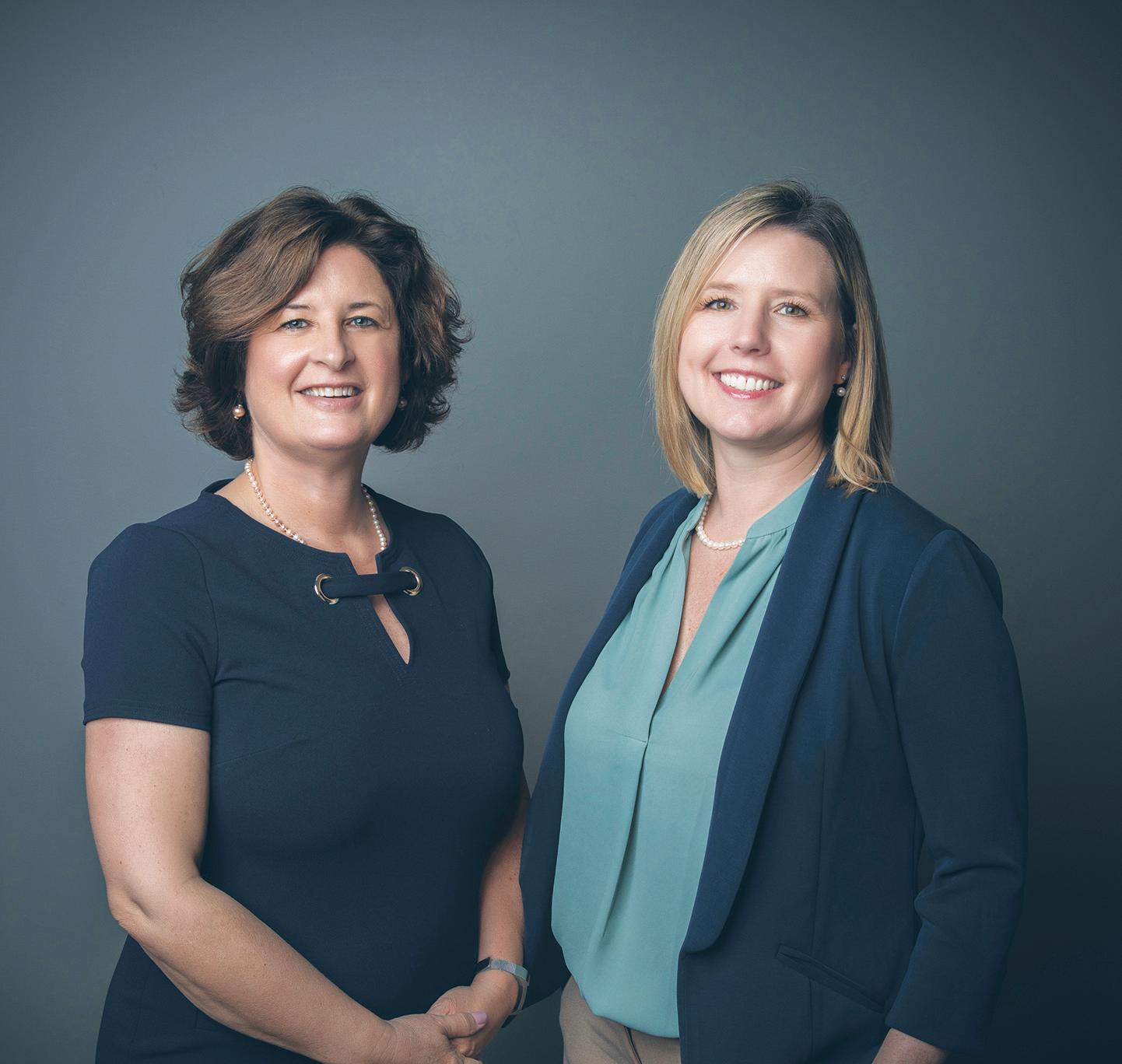


















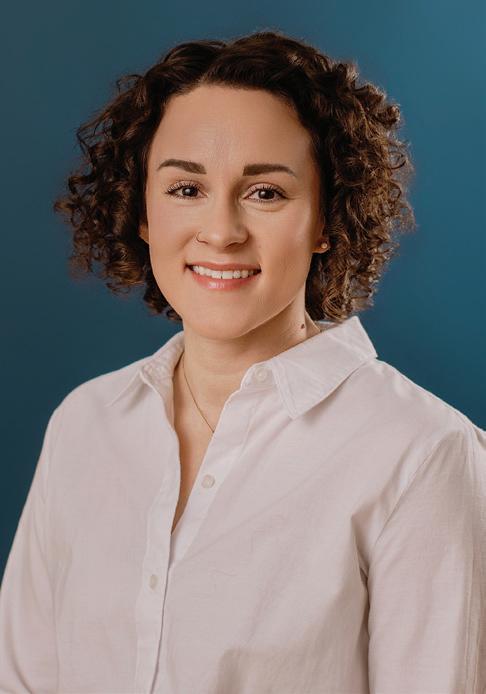

1 - Jessie Fousset joined the Grand Valley State University Traverse City Regional Center as student services coordinator. Most recently, Fousset worked for the Traverse Bay Children’s Advocacy Center.
2 - Dr. Sarah Montgomery-Richards has joined Grand Valley State University as the new assistant director of faculty in the northern Michigan region. Montgomery-Richards has been part of the higher education community in northern Michigan since 2015, having served as an instructor at Northwestern Michigan College. She has a background in religious and cultural diversity, professional development leadership, and online education.
>> FINANCIAL SERVICES
3 - Madelyn Ambrose has joined Horizon Financial in Traverse City as a client support associate. Ambrose brings prior financial experience at an area bank to her new role.




4 - Shania Bach has joined hemming& Wealth Management in Traverse City as office manager. Bach brings eight years of management experience to her new position.
5 - Hannah Near has joined Black Walnut Wealth Management in Traverse City as a wealth management advisor. Near has more than a decade of experience in the financial planning and accounting industries.
6 - Marissa Sobbry has joined Horizon Financial in Traverse City as operations and office manager. Sobbry previously worked at a local wealth management firm.
7 - Jordan Woiderski has joined hemming& Wealth Management in Traverse City as a relationship manager. Woiderski brings a 10-year project manager career in the manufacturing industry to her new role.


Morgan Stanley Wealth Management in Traverse City announces the following:
8 - Jason Idziak, a financial advisor, has been promoted to executive director. Idziak has been with the firm since 2003.
9 - Damian Lockhart, a financial advisor and branch manager, has been promoted to senior vice president. Lockhart has been with the firm since 2015.
10 - Brian Percy, a service professional, has been promoted to portfolio associate. Percy has been with the office since 2015.
>> HEALTH CARE
11 - Amanda Gross has joined Munson Healthcare Neurology in Traverse City as a physician assistant. Prior to becoming a physician assistant, Gross worked as a nurse aide in traumatic brain and spinal cord injury rehabilitation.















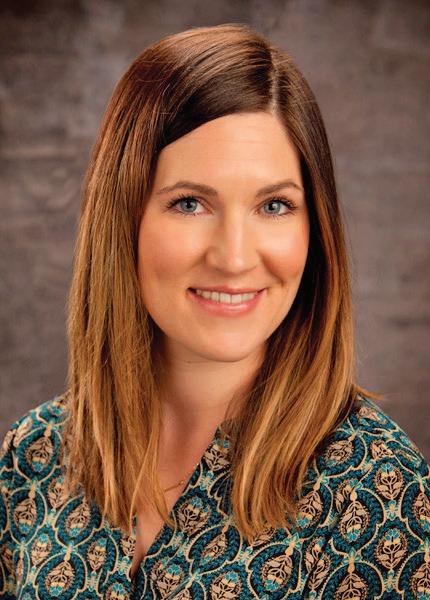


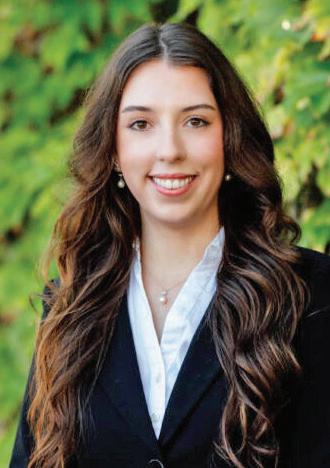



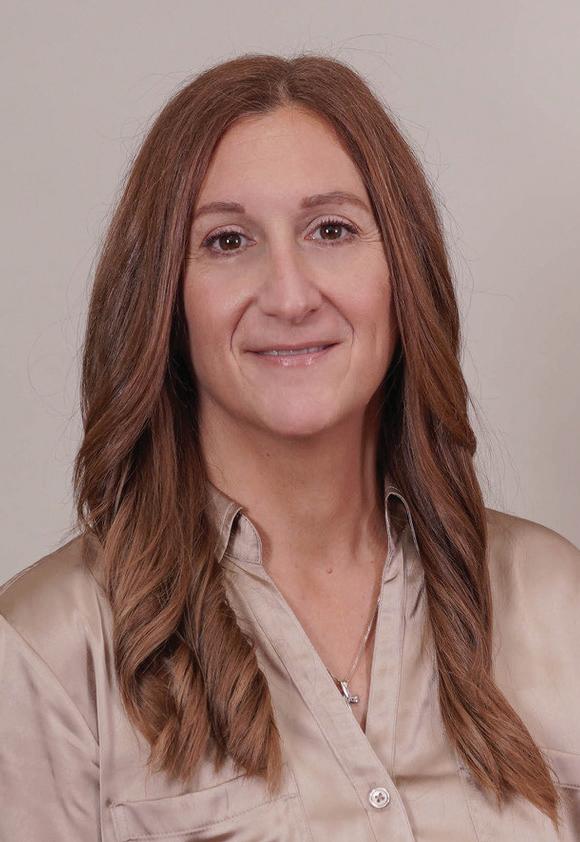
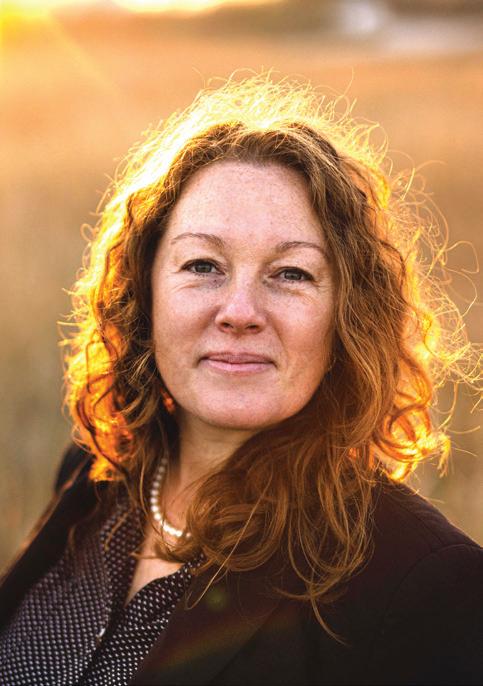


12 - Dr. Elizabeth Hunter has joined Thirlby Clinic in Traverse City. An internal medicine physician, Hunter’s special interests include preventative medicine, lifestyle interventions, chronic disease management, and musculoskeletal injuries.
13 - Dr. William Kern has joined Thirlby Clinic in Traverse City. An internal medicine physician, Kern specializes in both preventative medicine as well as management of chronic conditions including diabetes, heart disease, chronic kidney disease, and lung diseases.
14 - Dr. Nicole Strasko has partnered with Dr. Heather Rassel at Pure Chiropractic, located inside Jovia Wellness, in Traverse City. Dr. Strasko has a special interest in prenatal/pediatric chiropractic care.
>> LAW
15 - Annie Nietling has joined the Alward Fisher law firm in Traverse City as an associate attorney. Nietling specializes in business law, handling real estate, condominium and land use issues.
16 - Joseph Zayaz has been elected to shareholder status at the Alward Fisher law firm in Traverse City. Zayaz has been with the firm since 2017 and has practiced law in Traverse City since 2006. He specializes in commercial, business and real estate litigation.
>> REAL ESTATE
17 - Kim Costanza has joined Traverse Real Estate. Costanza has been involved in real estate since 2013.
18 - N oah Endres is now a commercial realtor with Three West Commercial. Endres joined Three West in 2023 and has since earned his real estate license.
19 - Laura Grezner has joined Traverse Real Estate. Grezner has been a licensed Realtor since 2015.
20 - Gaia Nesvacil has joined Serbin Real Estate in Glen Arbor as a licensed real estate agent.
>> OTHER
21 - Bill Byrne, vice president of financial planning and analysis for Hagerty, is now secretary/treasurer on the board of directors for Venture North Funding and Development. Byrne is entering his third year of service on the Venture North board.
22 - Peter Scott has joined 20Fathoms in Traverse City as entrepreneur in residence. In this role, Scott connects with local founders and helps them start companies, with a special focus on supporting the growth of the blue tech economy. He brings more than 20 years of experience in industry and academia helping inventors commercialize their technology.
Please send Newsmakers by the 10th of the month to news@tcbusinessnews.com







































































Whether you’re working to improve your credit, reduce debt, or boost your savings, MSUFCU can help you start your financial journey with confidence. With personalized products, budgeting tools, and financial education courses you’ll be able to stay on track in 2025 and beyond.
Not a member? Joining is quick and easy! If you live, work, go to school, or own a business in the state of Michigan, you’re eligible to join.

Kickstart your financial goals!
Schedule your checkup by scanning the QR code or visit msufcu.org/checkup.





























Family-owned & operated
Free in-home design consultation
Free professional measuring services
Certified installers
Over 45 years experience

